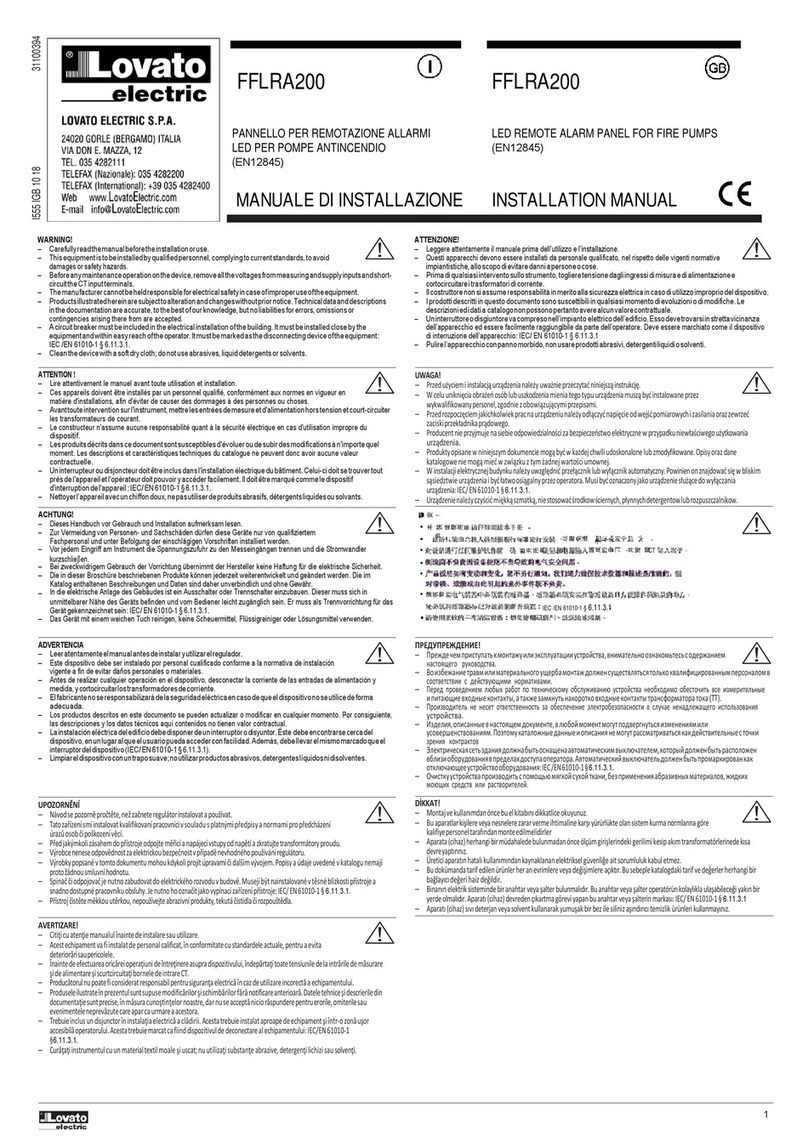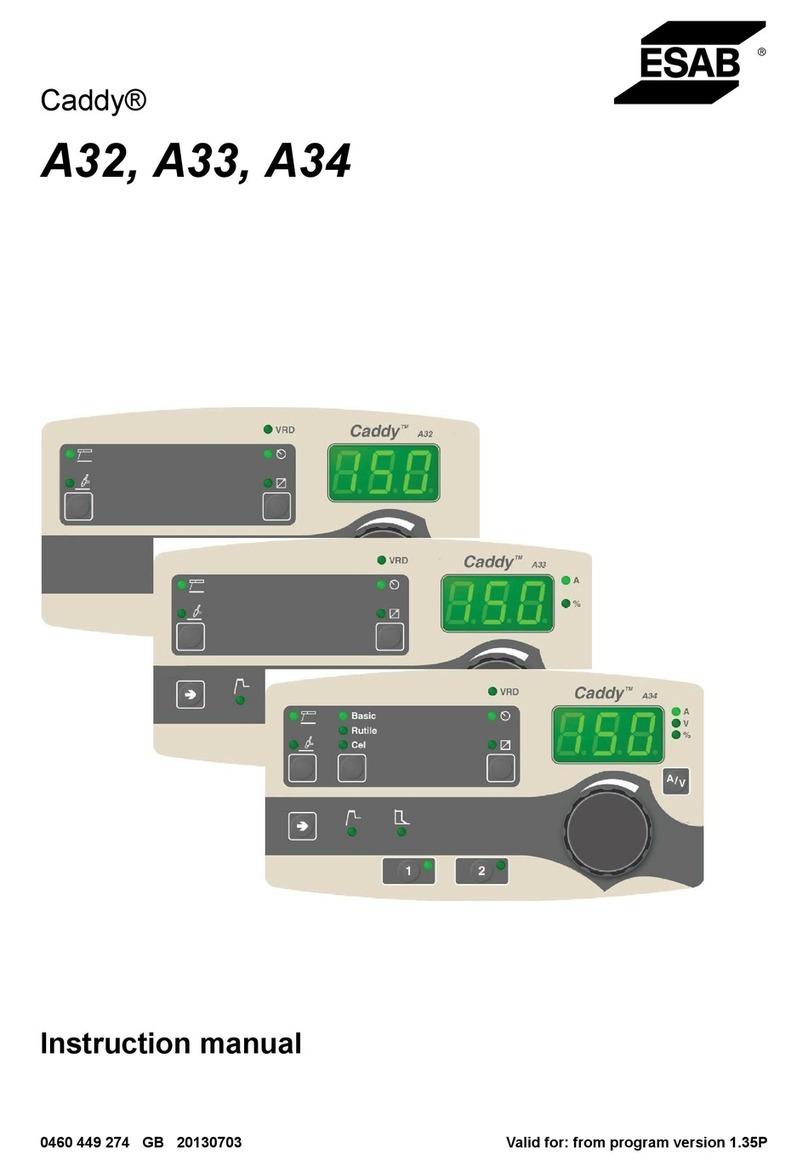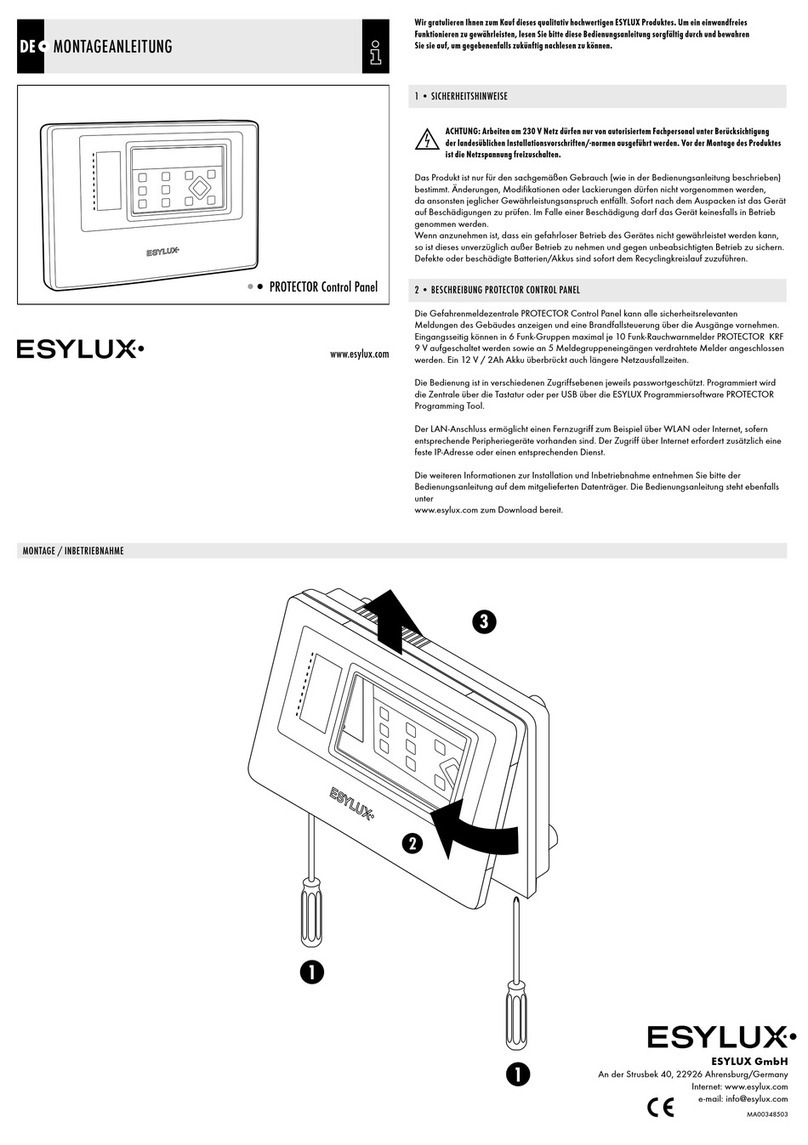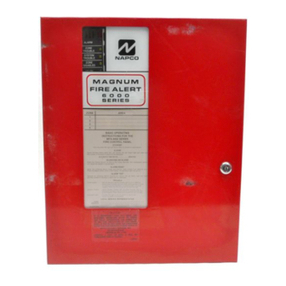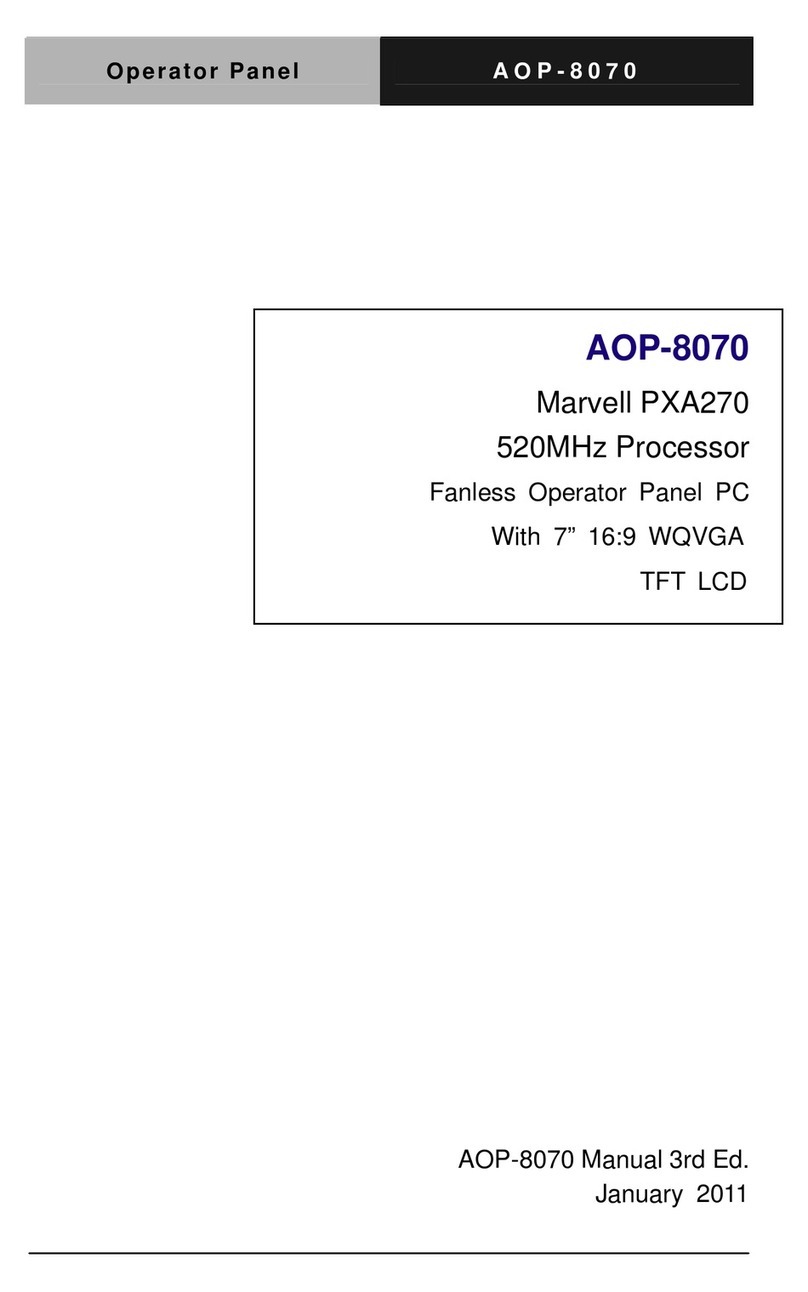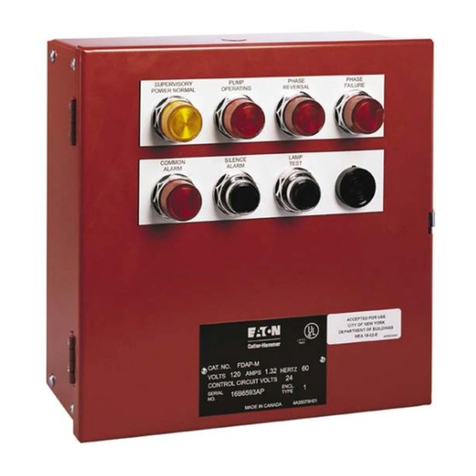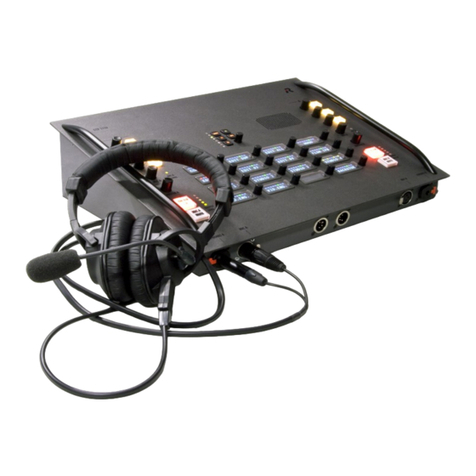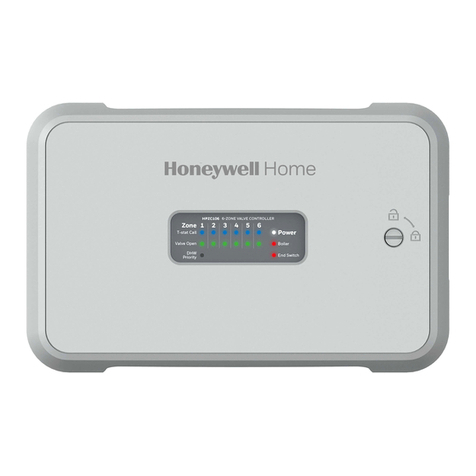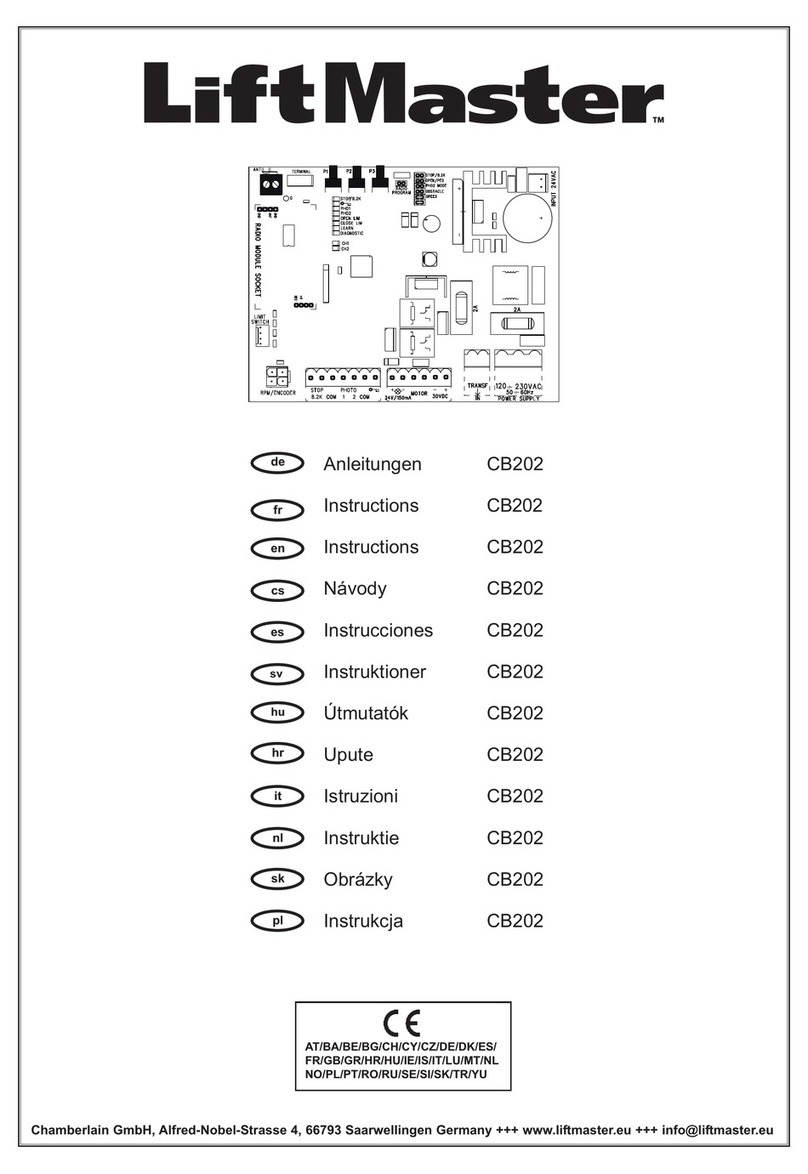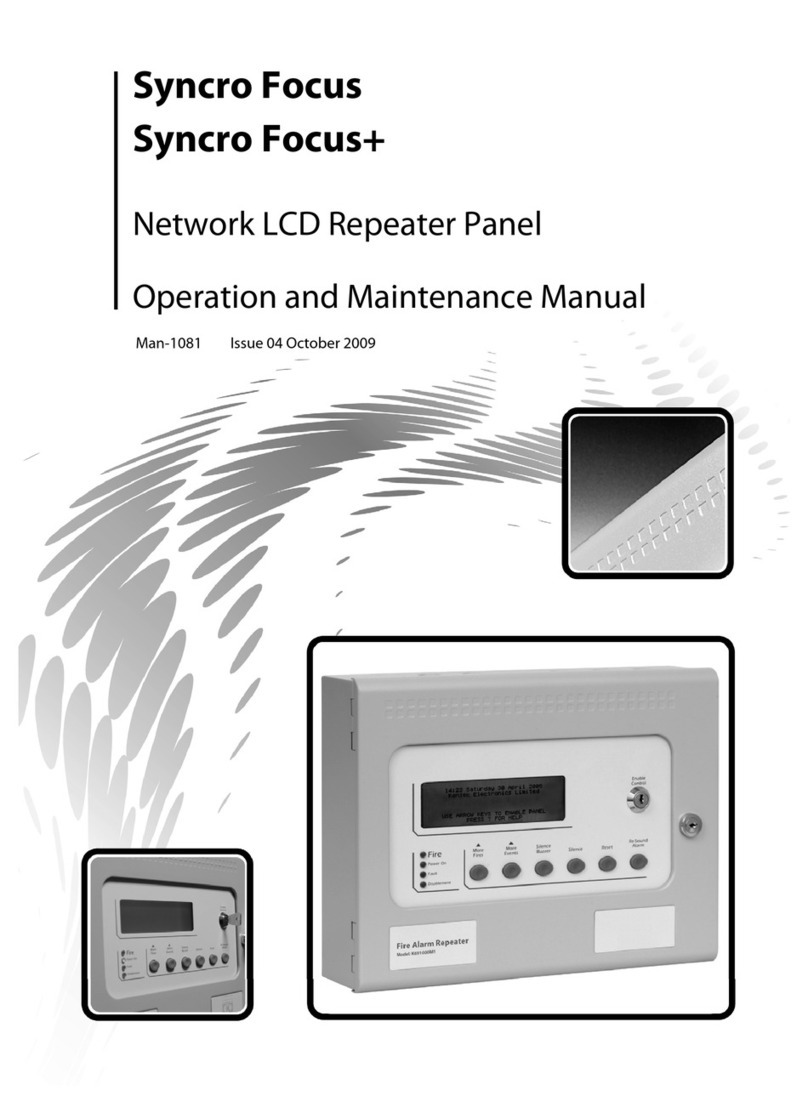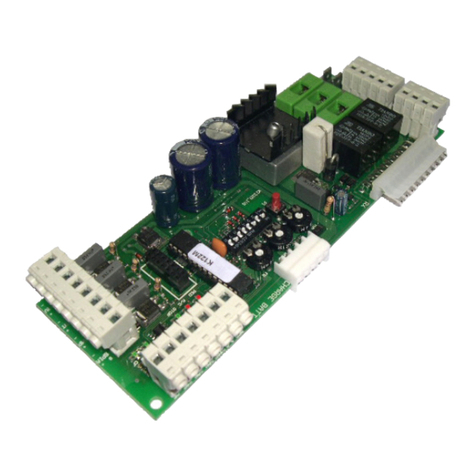LOVATO ELECTRIC FFLRA400 User manual

Doc: I556IGB01_20.docx 13/01/2020 p. 1 / 18
FFLRA400 FFLRA400
PANNELLO PER REMOTAZIONE ALLARMI LCD REMOTE ALARM PANEL FOR FIRE PUMP
LCD PER POMPE ANTINCENDIO (EN12845)
(EN12845)
MANUALE OPERATIVO INSTRUCTIONS MANUAL
ATTENZIONE!!
Leggere attentamente il manuale prima dell’utilizzo e l’installazione.
Questi apparecchi devono essere installati da personale qualificato, nel rispetto
delle vigenti normative impiantistiche, allo scopo di evitare danni a persone o cose.
Prima di qualsiasi intervento sullo strumento, togliere tensione dagli ingressi di
misura e di alimentazione e cortocircuitare i trasformatori di corrente.
Il costruttore non si assume responsabilità in merito alla sicurezza elettrica in caso di utilizzo
improprio del dispositivo.
I prodotti descritti in questo documento sono suscettibili in qualsiasi momento di evoluzioni o di
modifiche. Le descrizioni ed i dati a catalogo non possono pertanto avere alcun valore contrattuale.
Un interruttore o disgiuntore va compreso nell’impianto elettrico dell’edificio. Esso deve trovarsi in
stretta vicinanza dell’apparecchio ed essere facilmente raggiungibile da parte dell’operatore. Deve
essere marchiato come il dispositivo d’interruzione dell’apparecchio: IEC/ EN 61010-1 § 6.12.3.1.
Pulire lo strumento con panno morbido, non usare prodotti abrasivi, detergenti liquidi o solventi.
WARNING!
Carefully read the manual before the installation or use.
This equipment is to be installed by qualified personnel, complying to current
standards, to avoid damages or safety hazards.
Before any maintenance operation on the device, remove all the voltages from measuring and
supply inputs and short-circuit the CT input terminals.
Products illustrated herein are subject to alteration and changes without prior notice.
Technical data and descriptions in the documentation are accurate, to the best of our knowledge,
but no liabilities for errors, omissions or contingencies arising there from are accepted.
A circuit breaker must be included in the electrical installation of the building. It must be installed
close by the equipment and within easy reach of the operator.
It must be marked as the disconnecting device of the equipment: IEC /EN 61010-1 § 6.12.2.1.
Clean the instrument with a soft dry cloth; do not use abrasives, liquid detergents or solvents.
Indice
Pagina
Introduzione
1
Descrizione
2
Funzione dei tasti frontali
2
LED frontali
2
Pagina principale
3
Messa in servizio
3
Menu principale
4
Accesso tramite password
5
Navigazione fra le pagine del display
5
Tabella delle pagine del display
5
Espandibilità
6
Risorse aggiuntive
7
Canali di comunicazione
7
Ingressi, uscite
8
Modem GSM-GPRS
8
Porta di programmazione IR
9
Impostazione parametri da PC
9
Impostazione parametri (setup) da pannello frontale
9
Tabella parametri
11
Allarmi
14
Proprietà degli allarmi
14
Tabella allarmi
14
Descrizione degli allarmi
14
Tabella funzioni ingressi
14
Tabella funzioni uscite
15
Menu comandi
15
Installazione
16
Schemi di connessione
16
Caratteristiche tecniche
17
Index
Page
Introduction
1
Description
2
Keyboard functions
2
Front LEDs
2
Main page
3
Commissioning procedure
3
Main menu
4
Password access
5
Display page navigation
5
Table of display pages
5
Expandability
6
Additional resources
7
Communication channels
7
Inputs, outputs
8
GSM-GPRS modem
8
IR programming port
9
Parameter setting (setup) through PC
9
Setting of parameters (setup) from front panel
9
Parameters table
11
Alarms
14
Alarm properties
14
Alarm table
14
Alarm description
14
Input function table
14
Output function table
15
Commands menu
15
Installation
16
Wiring diagrams
16
Technical characteristics
17
Introduzione
FFLRA400 è un pannello per remotazione allarmi avanzato con display LCD
grafico retroilluminato. FFLRA400 è espandibile con i moduli EXP per aumentare
le sue caratteristiche in termini di comunicazione, ingressi e uscite digitali.
La comunicazione tra l'indicatore remoto e le unità di controllo FFL può essere
fatta tramite un segnale digitale pulsato (RA) o attraverso RS485, equipaggiando
il dispositivo con il modulo di espansione opzionale EXP10 12.
È possibile collegare fino a 3 dispositivi FFL.
Sulla parte anteriore del pannello sono presenti sei LED e il ronzatore per
visualizzare e notificare la presenza di allarmi. Al verificarsi di un allarme una
descrizione completa dell’allarme è disponibile sul display.
Introduction
FFLRA400 is an advanced remote alarm panel with backlit graphic LCD display.
FFL RA400 is expandable with EXP modules to increase its features in terms of
communication, digital inputs and outputs.
Communication between the remote indicator and the FFL control units can be
done via a pulsed digital signal (RA) or via RS485 if equipped with the optional
EXP10 12 expansion module.
You can connect up to 3 FFL devices.
On the front of the panel there are LEDs and buzzer to display and notify the
presence of alarms. When an alarm occurs, a complete description of the alarm is
available on the display.
I556IGB03_19 31100395

Doc: I556IGB01_20.docx 13/01/2020 p. 2 / 18
Descrizione
Auto impostazione guidata alla prima messa in tensione (Wizard).
Comunicazione via segnali impulsivi (RA) oppure RS485.
Display LCD grafico 128x80 pixel, retroilluminato.
5 tasti per funzioni ed impostazioni.
6 LED per visualizzare lo stato del sistema.
Testi in 10 lingue: inglese, italiano, francese, spagnolo, tedesco, portoghese,
russo, polacco, ceco e turco.
Bus di espansione con 2 slot per moduli di espansione serie EXP…:
oInterfacce di comunicazione USB, RS232, RS485, Ethernet, GSM/GPRS;
oI/O digitali aggiuntivi, uscite statiche o a relè;
Funzioni di I/O avanzate programmabili.
Allarmi completamente definibili dall’utente.
Interfaccia di programmazione ottica frontale, isolata galvanicamente, alta
velocità, impermeabile, compatibile con USB e Wi-Fi.
6 ingressi digitali, di cui 5 programmabili.
3 uscite digitali.
Alimentazione 100…240VAC.
Supporto interno della batteria (non inclusa).
Fusibili di protezione AC e DC.
Protezioni del caricabatterie:
oCorto circuito;
oPolarità inversa;
oBassa tensione batteria;
oSovraccarico;
oReset automatico al termine delle condizioni di allarme.
Grado di protezione frontale IP40.
Description
Guided setup (Wizard) at first power on.
Communication from pulse signals (RA) or RS485.
Graphic LCD display 128x80 pixels, back lighted.
5 keys for functions and setup.
6 LEDs to display the system status.
Texts in 10 languages: English, Italian, French, Spanish, German,
Portuguese, Russian, Polish, Czech and Turkish.
Expansion bus with 2 slots for expansion modules EXP... :
oCommunication interface USB, RS232, RS485, Ethernet, GSM/GPRS;
oAdditional digital I/O, static or relay outputs.
Advanced programmable I/O functions.
Fully user-definable alarms.
Front optical programming interface, galvanically isolated, high speed, IP65,
USB and Wi-Fi compatible.
6 digital inputs, of which 5 programmable.
3 digital outputs.
Power supply: 100...240VAC.
Internal battery support (battery not included).
Protection fuses AC and DC.
Battery charger protection:
oShort circuit;
oReverse battery polarity;
oLow battery voltage;
oOverload;
oAutomatic reset at end of alarm conditions.
Degree of protection IP40 on front.
Funzione dei tasti frontali
A. 1 tasto per la verifica dei led.
B. 1 tasto per tacitazione sirena.
C. 5 tasti per navigazione / impostazione.
Keyboard functions
A. 1 key to test the leds.
B. 1 siren silence key.
C. 5 keys for navigation and setup.
LED frontali
Motopompa:
a) modo automatico escluso;
b) mancato avviamento;
c) pompa in moto;
d) presenza di allarme globale sul controllore per pompa antincendio;
e) alimentazione batteria disponibile / comunicazione presente;
f) segnalazione personalizzata.
Elettropompa:
a) alimentazione non disponibile;
b) mancato avviamento;
c) pompa in moto;
d) richiesta di avviamento;
e) alimentazione batteria disponibile / comunicazione presente;
f) segnalazione personalizzata.
Front LEDs
Engine pump:
a) automatic mode excluded;
b) failure to start;
c) pump running;
d) global alarm on the pump controller;
e) battery power supply available / communication present;
f) custom alarm.
Electrical pump:
a) power supply not available;
b) failure to start;
c) pump running;
d) starting request;
e) battery power supply available / communication present;
f) custom alarm.

Doc: I556IGB01_20.docx 13/01/2020 p. 3 / 18
Pagina principale
Main page
Messa in servizio
Commissioning procedure
Prima di procedere alla configurazione del pannello remotazione allarmi
FFLRA400, è necessario configurare i parametri di comunicazione dei controllori
antincendio FFL ad essa collegati.
I controllori FFL possono essere connessi tramite segnale digitale pulsato (RA) o
via RS485.
Collegamento via segnale digitale pulsato (RA)
Nel caso di collegamento via segnale digitale pulsato (RA) è necessario collegare
l’uscita digitale pulsata (OUT11 per controllore FFL…DP, OUT10 per FFL..EP) ai
morsetti 1-2 del FFLRA400 come mostrato nell’immagine seguente. Per maggiori
dettagli fare riferimento allo schema riportato nell’ultima pagina del manuale
dedicato.
Collegamento via RS485
In presenza di più controllori FFL da collegare allo stesso pannello FFLRA400,
collegare i controllori FFL tra loro tramite la porta RS485 integrata ed uno solo di
essi al controllore FFLRA400 tramite uscita digitale pulsata, come mostrato
nell’immagine a seguire.
Ogni controllore FFL deve essere configurato con un nodo seriale ID differente e
multiplo di 10. Per esempio, nel caso di due controllori FFL collegati allo stesso
pannello FFLRA400, dovranno avere rispettivamente nodo seriale 10 e 20; in
caso di tre controllori FFL (configurazione massima ammessa) dovranno avere
nodo seriale 10, 20 e 30, dove la prima cifra identifica il numero della pompa che
verrà visualizzata sul pannello FFLRA400 (pompa 1, 2 o 3).
Inoltre tutti i controllori FFL dovranno avere gli stessi parametri di comunicazione
seriale lasciati ai valori di default (baudrate=9600bps, bit di stop=1,
parità=nessuna e protocollo=Modbus RTU).
Before configuring the FFLRA400 alarm remote control panel, it is necessary to
configure the communication parameters of the FFL fire-fighting controllers
connected to it.
FFL controllers can be connected via pulsed digital signal (RA) or via RS485.
Connection via pulsed digital signal (RA)
In the case of connection via pulsed digital signal (RA) it is necessary to connect
the pulsed digital output (OUT11 for FFL ... DP controller, OUT10 for FFL..EP) to
the terminals 1-2 of the FFLRA400 as shown in the following image. For more
details, refer to the diagram on the last page of the dedicated manual.
Connection via RS485
If multiple FFL controllers are connected to the same FFLRA400 panel, connect
the FFL controllers to each other via the integrated RS485 port and only one of
them to the FFLRA400 controller via pulsed digital output, as shown in the image
below.
Each FFL controller must be configured with a unique and multiple of 10 serial
node ID. For example, in the case of two FFL controllers connected to the same
FFLRA400 panel, they must have serial node 10 and 20 respectively; in the case
of three FFL controllers (maximum configuration allowed) they must have serial
node 10, 20 and 30, where the first digit identifies the pump number which will be
displayed on the FFLRA400 panel (pump 1, 2 or 3).
Furthermore, all FFL controllers must have the same serial communication
parameters left at the default values (baudrate = 9600bps, stop bit = 1, parity =
none and protocol = Modbus RTU).
Pompa 1
Stato controller
Modalità operativa
MAN / AUT
Stato motore
Pompa 2
Errore di
comunicazione
Pump 1
Controller status
Operating mode
MAN / AUT
Motor status
Pump 2
Communication
error

Doc: I556IGB01_20.docx 13/01/2020 p. 4 / 18
Per configurare i parametri di comunicazione fare riferimento alle impostazioni
della COM1, diponibile nel menu COMUNICAZIONE dei controllori FFL (nello
specifico M17 per controllori FFL…DP e M11 per FFL…EP),che rappresenta la
porta seriale RS485 integrata.
Infine, il controllore FFL con nodo seriale ID pari a 10 deve essere configurato
come master della rete, mentre gli altri devono essere configurati come slave
(impostazione di default). Per fare ciò, impostare sul controllore FFL con nodo
seriale ID pari a 10 il parametro Funzione canale (P17.01.09 per FFL…DP e
P11.01.09 per FFL…EP) a Master +1 nel caso di due controllori FFL, oppure
Master +2 nel caso di tre controllori FFL collegati al pannello FFLRA400. Gli altri
controllori FFL dovranno invece avere il parametro “Funzione canale” impostato a
“Slave” (default).
Configurazione del pannello remotazione allarmi FFLRA400
Alla prima accensione il pannello esegue il setup rapido (Wizard).
È possibile ripetere la procedura di setup rapido in qualsiasi momento
eseguendo il comando C01 disponibile nel menu comandi.
Passaggio 1: selezione della lingua.
Passaggio 2: selezione del numero di dispositivi (controllori FFL) connessi.
Passaggio 3: selezione della tipologia dei dispositivi (controllori FFL) connessi.
Al termine del setup il pannello si riavvia con la nuova configurazione.
I parametri del menu setup vengono impostati automaticamente in funzione delle
scelte effettuate, inclusi i testi degli allarmi e le loro proprietà.
To configure the communication parameters, refer to the settings of COM1,
available in the COMMUNICATION menu of the FFL controllers (i.e. M17 for FFL
... DP controllers and M11 for FFL ... EP), which represents the integrated RS485
serial port.
Finally, the FFL controller with serial node ID equal to 10 must be configured as
the master of the network, while the others must be configured as slave (default
setting). To do this, set on the FFL controller with serial node ID equal to 10 the
parameter Channel function (P17.01.09 for FFL ... DP and P11.01.09 for FFL ...
EP) to Master +1 in the case of two FFL controllers, or Master + 2 in the case of
three FFL controllers connected to the FFLRA400 panel. The other FFL
controllers must instead have the "Channel function" parameter set to "Slave"
(default).
Configuration of the FFLRA400 alarm remote control panel
At first power on, the panel executes the sequence for quick setup (Wizard).
You can repeat the Quick Setup procedure at any time by running the C01
command available in the command menu.
Step 1: language selection.
Step 2: selection of the number of connected devices.
Step 3: selection of the type of connected devices.
When the setup is complete, the panel reboots with the new configuration.
The setup menu parameters will be automatically set according to the previous
choices, including alarm text strings and properties.
Menu principale
Il menu principale è costituito da un insieme di icone grafiche che permettono
l’accesso rapido alle misure ed alle impostazioni.
Partendo dalla visualizzazione delle pagine, premendo i tasti ▲e ▼
contemporaneamente. Il display visualizza il menu rapido.
Premere ▲o ▼ per ruotare in senso orario/antiorario fino a selezionare la
funzione desiderata. L’icona selezionata viene evidenziata e la scritta nella
parte centrale del display indica la descrizione della funzione.
Premere OK ()per attivare la funzione selezionata.
Se alcune funzioni non sono disponibili la corrispondente icona sarà
disabilitata, cioè visualizzata in colore grigio chiaro.
–Impostazione del codice numerico che consente l’accesso alle funzioni
protette (impostazione dei parametri, esecuzione di comandi).
–Punto di accesso alla programmazione dei parametri. Vedere il capitolo
dedicato.
–Punto di accesso al menu comandi, dove l’utente abilitato può eseguire
una serie di azioni di azzeramento e ripristino.
Main menu
The main menu is made up of a group of graphic icons (shortcuts) that allow
rapid access to measurements and settings.
Starting from normal viewing, press the ▲and ▼keys simultaneously. The
main menu screen is displayed.
Press ▲▼ to rotate clockwise / counter clockwise to select the required
function. The selected icon is highlighted and the central part of the display
shows the description of the function.
Press OK ()to activate the selected function.
If some functions are not available, the correspondent icon will be disabled, that
is shown in a light grey colour.
–Opens the password entry page, where it is possible to specify the
numeric codes that unlock protected functions (parameter setting, commands
menu).
–Access point to the setup menu for parameter programming. See
dedicated chapter.
–Access point to the commands menu, where the authorised user can
execute some clearing-restoring actions.

Doc: I556IGB01_20.docx 13/01/2020 p. 5 / 18
Accesso tramite password
La password serve per abilitare o bloccare l’accesso al menu di impostazione
ed al menu comandi.
Per gli apparecchi nuovi di fabbrica (default), la password è disabilitata e
l’accesso è libero. Se invece le password sono state abilitate, per ottenere
l’accesso bisogna prima inserire il relativo codice di accesso numerico.
Per abilitare l’uso delle password e definire i codici di accesso fare riferimento
al menu di impostazione M02 Password.
Esistono due livelli di accesso, a seconda del codice inserito:
Accesso livello utente –consente l’azzeramento dei valori registrati e la
modifica di alcune impostazioni dell’apparecchio.
Accesso livello avanzato –stessi diritti dell’utente con in più la possibilità
di modificare tutte le impostazioni.
Dalla normale visualizzazione misure, premere per richiamare il menu
principale, quindi selezionare l’icona password e premere .
Compare la finestra di impostazione password in figura:
Password access
The password is used to enable or lock the access to setting menu (setup) and
to commands menu.
For brand-new devices (factory default), the password management is disabled
and the access is free. If instead the passwords have been enabled and
defined, then to get access, it is necessary to enter the password first.
To enable password management and to define numeric codes, see setup
menu M02 Password.
There are two access levels, depending on the code entered:
User-Level access –Allows clearing of recorded values and the editing of a
restricted number of setup parameters.
Advanced access level –Same rights of the user access plus full settings
editing-restoring.
From normal viewing, press to recall main menu, select the password icon
and press.
The display shows the screen in picture:
Con i tasti ▲e ▼si cambia il valore della cifra selezionata.
Con i tasti - e+ ci si sposta fra le cifre.
Inserire tutte le cifre della password, quindi spostarsi sull’icona chiave.
Quando la password inserita corrisponde alla Password livello Utente o alla
Password livello Avanzato, compare il relativo messaggio di sblocco.
Una volta sbloccata la password, l’accesso rimane abilitato fino a che:
1. l’apparecchio viene spento.
2. l’apparecchio viene resettato (in seguito all’uscita dal menu impostazioni).
3. trascorrono più di 2 minuti senza che l’operatore tocchi alcun tasto.
Con il tasto OK ()si abbandona l’impostazione password e si esce.
Keys ▲and ▼change the selected digit
Keys - and + move through the digits.
Enter all the digits of the numeric code, and then move on the key icon.
If the password code entered matches the User access code or the advanced
access code, then the correspondent unlock message is shown.
Once unlocked the password, the access rights last until:
1. the device is powered off.
2. the device is reset (after quitting the setup menu).
3. the timeout period of two minutes elapses without any keystroke.
To quit the password entry screen, press OK ()key.
Navigazione fra le pagine display
I tasti ▲e ▼consentono di scorrere le pagine di visualizzazione misure una
per volta. La pagina attuale è riconoscibile tramite la barra del titolo.
Alcune delle misure potrebbero non essere visualizzate in funzione della
programmazione e del collegamento dell’apparecchio.
Per alcune pagine sono disponibili delle sotto-pagine accessibili tramite il tasto
+.
L’utente ha la possibilità di specificare su quale pagina e su quale sottopagina il
display deve ritornare automaticamente dopo che è trascorso un tempo senza
che siano premuti dei tasti.
Volendo è anche possibile programmare il sistema in modo che la
visualizzazione resti sempre nella posizione in cui è stata lasciata.
Per l’impostazione di queste funzioni vedere menu M01 –Utilità.
Display page navigation
Keys ▲and ▼scroll through the measurements pages one by one. The title
bar shows the current page.
Some measurements may not be shown depending on the system
programming and connections.
Sub-pages, which can be opened with key +, are also available on some pages.
The user can specify which page and which sub-page the display should return
to automatically when no keys have been pressed for a certain time.
The system can also be programmed so the display remains were it was last.
You can set this function in menu M01 –Utility.
Tabella delle pagine del display
Table of display pages
PAGINE
ESEMPIO
Pagina principale
PAGES
EXAMPLE
Main page
Pump 3 status
Main page
Battery status
Alarms status
Inputs/outputs state
List of events
System info
Setup
Commands
menu
Enter password
Pump 1 status
Pump 2 status
Stato pompa 3
Pagina principale
Stato batteria
Stato allarmi
Stato ingressi/uscite
Lista eventi
Informazioni di
sistema
Impostazioni (Setup)
Menu
comandi
Inserimento
password
Stato pompa 1
Stato pompa 2

Doc: I556IGB01_20.docx 13/01/2020 p. 6 / 18
Stato allarmi
Stato batteria
Elenco e stato ingressi
digitali
Elenco e stato uscite
digitali
Monitoraggio pompa
Lista eventi
Alarm status
Battery status
Digital inputs, list and
status
Digital outputs, list and
status
Pump status
Events list
Espandibilità
Grazie al suo bus di espansione, il pannello per remotazione allarmi può
essere espanso con dei moduli aggiuntivi della serie EXP….
E’ possibile installare un massimo di 2 moduli EXP… contemporaneamente.
I moduli EXP… supportati dal FFLRA400 si dividono nelle seguenti categorie:
1. moduli di comunicazione;
2. moduli di I/O digitale;
Per inserire un modulo di espansione:
togliere l’alimentazione al dispositivo;
rimuovere uno dei coperchi protettivi degli slot di espansione;
inserire il gancio superiore del modulo nella apposita feritoia a sinistra nello
slot;
ruotare il modulo verso destra inserendo il connettore sul bus;
premere fino a che l’apposita clip sul lato inferiore del modulo si aggancia a
scatto.
Salvo diversa indicazione, l’ordine di inserimento dei moduli è libero.
Expandability
Thanks to expansion bus, the remote alarm panel can be expanded with
EXP… series modules.
It is possible to connect a maximum of 2 EXP… modules at the same time.
The supported EXP modules can be grouped in the following categories:
1. communication modules;
2. digital I/O modules;
To insert an expansion module:
remove the device power supply;
remove the protecting cover of one of the expansion slots;
insert the upper hook of the module into the fixing hole on the left of the
expansion slot;
rotate right the module body, inserting the connector on the bus;
push until the bottom clip snaps into its housing.
Unless otherwise specified, the modules can be inserted in any sequence.

Doc: I556IGB01_20.docx 13/01/2020 p. 7 / 18
Quando una FFLRA400 viene alimentata, riconosce automaticamente i moduli
EXP ad essa collegati.
Se la configurazione del sistema è diversa rispetto all’ultima rilevata (è stato
aggiunto o rimosso un modulo), la centralina chiede all’utente di confermare la
nuova configurazione. In caso di conferma la nuova configurazione verrà
salvata e diventerà effettiva, altrimenti ad ogni messa in tensione verrà
segnalata la discordanza.
La configurazione attuale del sistema è visualizzata nell’apposita pagina del
display (moduli espansione), dove si vedono il numero, il tipo e lo stato dei
moduli collegati.
La numerazione degli I/O viene elencata sotto ogni modulo.
Lo stato (attivato/disattivato) degli I/O e dei canali di comunicazione viene
evidenziato con la scritta in negativo.
When the FFLRA400 is powered on, it automatically recognises the EXP
modules that have been mounted.
If the system configuration has changed with respect to the last saved (one
module has been added or removed), the controller asks the user to confirm
the new configuration. In case of confirmation, the new configuration will be
saved and will become effective; otherwise the mismatch will be shown at
every subsequent power-on of the system.
The actual system configuration is shown in a dedicated page of the display
(expansion modules), where it is possible to see the number, the type and the
status of the modules.
The I/O numbering is shown under each module.
The status (energised/de-energised) of every single I/O and communication
channel is highlighted in reverse
Risorse aggiuntive
I moduli di espansione forniscono delle risorse aggiuntive che possono essere
sfruttate tramite gli opportuni menu di impostazione.
I menu di impostazione che riguardano le espansioni sono disponibili anche se
i moduli non sono fisicamente presenti.
Dato che è possibile aggiungere più moduli della stessa tipologia (ad esempio
due interfacce di comunicazione) i relativi menu d’impostazione sono multipli,
identificati da un numero progressivo.
Di seguito una tabella che indica quanti moduli di ogni tipo possono essere
montati contemporaneamente. Il numero totale di moduli deve essere <= 2.
TIPO MODULO
CODICE
FUNZIONE
Nr. MAX
COMUNICAZIONE
EXP 10 10
USB
2
EXP 10 11
RS-232
2
EXP 10 12
RS-485
2
EXP 10 13
Ethernet
1
EXP 10 15
GSM/GPRS modem
1
I/O DIGITALI
EXP 10 00
4 INGRESSI
2
EXP 10 01
4 USCITE STATICHE
2
EXP 10 02
2 INGRESSI + 2 USCITE ST.
2
EXP 10 03
2 RELE’ IN SCAMBIO
2
EXP 10 08
2 INGRESSI + 2 RELE’ NA
2
Additional resources
The expansion modules provide additional resources that can be used through
the dedicated setup menus.
The setup menus related to the expansion modules are always accessible,
even if the expansion modules are not physically fitted.
Since it is possible to add more than one module of the same typology (for
instance two communication interfaces), the setup menus are multiple,
identified by a sequential number.
The following table indicates how many modules of each group can be
mounted at the same time. The total number of modules must be less or equal
than 2.
MODULE TYPE
CODE
FUNCTION
MAX Nr.
COMMUNICATION
EXP 10 10
USB
2
EXP 10 11
RS-232
2
EXP 10 12
RS-485
2
EXP 10 13
Ethernet
1
EXP 10 15
GSM/GPRS modem
1
DIGITAL I/O
EXP 10 00
4 INPUTS
2
EXP 10 01
4 STATIC OUTPUTS
2
EXP 10 02
2 INPUTS + 2 ST. OUTPUTS
2
EXP 10 03
2 CHANGEOVER RELAYS
2
EXP 10 08
2 INPUTS + 2 RELAYS NO
2
Canali di comunicazione
Al pannello FFLRA400 è possibile connettere un massimo di 2 moduli di
comunicazione, denominati COMn. Il menu d’impostazione delle comunicazioni
prevede quindi due sezioni (n=1…2) di parametri per l’impostazione delle porte
di comunicazione.
I canali di comunicazione sono completamente indipendenti, sia dal punto di
vista hardware (tipo di interfaccia fisica) che dal punto di vista del protocollo di
comunicazione.
I canali di comunicazione possono funzionare contemporaneamente.
Communication channels
The FFLRA400 supports a maximum of 2 communication modules, indicated
as COMn. The communication setup menu is thus divided into two sections
(n=1 … 2) of parameters for the setting of the ports.
The communication channels are completely independent, both for the
hardware (physical interface) and for the communication protocol.
The channels can communicate at the same time.

Doc: I556IGB01_20.docx 13/01/2020 p. 8 / 18
Ingressi, uscite, variabili interne
Gli ingressi e le uscite sono identificati da una sigla e da un numero
progressivo. Ad esempio gli ingressi digitali sono denominati INPx, dove x
rappresenta il numero dell’ingresso. Allo stesso modo, le uscite digitali sono
denominate OUTx.
La numerazione degli ingressi / uscite si basa semplicemente sulla posizione di
montaggio dei moduli di espansione, con una numerazione progressiva
dall’alto verso il basso.
La numerazione degli I/O di espansione parte a cominciare dall’ultimo I/O
montato sulla centralina. Ad esempio, per gli ingressi digitali, INP1…INP6 sulla
centralina, e quindi il primo ingresso digitale sui moduli di espansione sarà
denominato INP7.
Vedere la seguente tabella per la numerazione degli I/O:
COD
DESCRIZIONE
BASE
EXP
INPx
Ingressi digitali
1…6
7…10
OUTx
Uscite digitali
1…3
4…7
COMx
Porte di comunicazione
-
1, 2
Inputs, outputs, internal variables
The inputs and outputs are identified by a code and a sequence number. For
instance, the digital inputs are identified by code INPx, where x is the number
of the input. In the same way, digital outputs are identified by code OUTx.
The sequence number of I/Os is simply based on their mounting position, with
a progressive numbering from top to bottom.
The expansion I/O numbering starts from the last I/O installed on the controller.
For example, with INP1…INP6 digital inputs on the controller, the first digital
input on the expansion modules will be INP7.
See the following table for the I/O numbering:
COD
DESCRIZIONE
BASE
EXP
INPx
Digital Inputs
1…6
7…10
OUTx
Digital Outputs
1…3
4…7
COMx
Communication ports
-
1,2
Modem GSM –GPRS
Sul bus di espansione dell’FFLRA400 può essere montato il modulo modem
GSM/GPRS codice EXP 10 15.
Questo modulo consente di semplificare notevolmente l’utilizzo di un modem
rispetto alla tradizionale soluzione con un modem esterno in quanto offre i
seguenti vantaggi:
Modem GSM-GPRS quadri-band, adatto al funzionamento in tutte le aree
geografiche del mondo.
L’alimentazione del modem è garantita dalla centralina anche durante
l’avviamento del motore, quando la tensione di batteria scende
momentaneamente a valori non compatibili con i modem esterni tradizionali.
Alloggiamento incorporato per SIM card.
Connettore SMA per antenna da esterno quadri-band, antivandalo, IP65
(cod. Lovato CX03).
Le funzionalità supportate sono riassunte di seguito:
Connessione online (CSD-PSD)
Permette di collegarsi online tramite il software di controllo remoto, in seguito
ad una chiamata entrante proveniente dal PC oppure chiamando
autonomamente un PC in attesa.
Invio SMS con allarmi / stati / eventi
Invio di stati ed allarmi via SMS a destinatari multipli. E’ necessario in questo
caso specificare i numeri di telefono dei destinatari e le condizioni che
generano la chiamata.
Invio e-mail
Come per SMS, ma inviato ad un account di posta elettronica.
Ricezione di comandi da SMS
Permette di controllare l’FFLRA inviando un SMS. I comandi supportati sono i
seguenti:
Comandi
Azione
ALARMS?
Restituisce elenco allarmi attivi
INFO?
Richiede stato generale della pompa. L’apparecchio risponde
con una stringa come la seguente:
ID = (nome impianto)
BAT = (xxxV)
PUMP1 = OK o KO
PUMP2 = OK o KO
PUMP3 = OK o KO
A01 = ON o OFF
A02 = ON o OFF
A03 = ON o OFF
A04 = ON o OFF
A05 = ON o OFF
A06 = ON o OFF
GSM - GPRS modem
On the FFLRA400 expansion bus it is possible to insert the GSM/GPRS
modem module EXP 10 15.
This module allows to greatly simplify the use of a modem compared to the
traditional solution with an external modem as it provides the advantages listed
below:
Quadri-band GSM-GPRS modem, suitable for use in with worldwide
networks.
The modem power supply is guaranteed by the controller also during
starting of the engine, when the battery voltage drops momentarily to values
not compatible with the traditional external modem.
Built-in SIM card holder.
SMA connector for quad-band outdoor antenna, anti-vandal, IP65
waterproof (Lovato code CX03).
The supported features are summarized below:
● Online connection (CSD-PSD)
Allows you to connect online via the remote control software, in response to an
incoming call from your PC or calling themselves a PC on hold.
● Send SMS with alarms / states / events
It allows you to send status and alarms via SMS to multiple recipients. If
necessary in this case to specify the phone numbers of the recipients and the
conditions that generate the call.
● E-mail sending
As per SMS, but sent to an e-mail account.
Command by SMS
This function allows to commad the FFLRA by sending SMS. Supported
commands are the following:
Comandi
Azione
ALARMS?
The reply returns the active alarms
INFO?
The reply returns the general status of the pumps. The string is
composed as follows:
ID = (ID name)
BAT = (xxxV)
PUMP1 = OK or KO
PUMP2 = OK or KO
PUMP3 = OK or KO
A01 = ON or OFF
A02 = ON or OFF
A03 = ON or OFF
A04 = ON or OFF
A05 = ON or OFF
A06 = ON or OFF
Invio dati ed eventi su file remoto tramite server FTP
E’ possibile inviare tutti gli eventi registrati dall’FFLRA400 su un file gestito da
un server FTP. In questo modo si può avere sul proprio server la storia
aggiornata di tutto quanto è successo sui gruppi in campo.
Le impostazioni necessarie al funzionamento del modem GSM possono essere
effettuate tramite l’apposita finestra Parametri modem del software di controllo
Sending data and event files on remote FTP server
It is possible to send all the events recorded by the FFLRA400 on a file
managed from an FTP server. In this way you can have on the server the
updated history of what has happened on all gen-sets in the field.
The settings required for the operation of the GSM modem can be made
through the appropriate Modem parameters window of the Xpress software.
When the modem is operating into the controller it is possible to see its status

Doc: I556IGB01_20.docx 13/01/2020 p. 9 / 18
remoto Xpress.
Una pagina del display visualizza tutte le informazioni riguardanti il modem, in
modo da evidenziare le azioni in corso, la qualità del segnale e gli eventuali
problemi di connessione.
through a dedicated page that shows the modem action in progress, the signal
quality and eventually the connection problem codes.
Porta di programmazione IR
La configurazione dei parametri del pannello FFLRA400 si può effettuare
tramite la porta ottica frontale, attraverso la chiavetta di programmazione IR-
USB (codice CX01) oppure la chiavetta IR-WiFi (codice CX02).
Questa porta di programmazione ha i seguenti vantaggi:
consente di effettuare la configurazione e la manutenzione dell’unità di
controllo senza la necessità di accedere al retro dell’apparecchio e quindi
di aprire il quadro elettrico;
è galvanicamente isolata dalla circuiteria interna, garantendo la massima
sicurezza per l’operatore;
consente un’elevata velocità di trasferimento dei dati;
restringe la possibilità di accessi non autorizzati alla configurazione del
dispositivo.
Semplicemente avvicinando una chiavetta CX…alla porta frontale ed
inserendo le spine negli appositi fori, si otterrà il vicendevole riconoscimento
dei dispositivi evidenziato dal colore verde del LED LINK sulla chiavetta di
programmazione
IR programming port
The parameters of the FFL700DP and FFLRA400 can be configured through
the front optical port, using the IR-USB (code CX01) programming dongle or
with the IR-WiFi (code CX02) dongle.
This programming port has the following advantages:
you can configure and service the control unit without access to the rear
of the device or having to open the electrical panel;
it is galvanically isolated from the internal circuits, guaranteeing the
greatest safety for the operator;
high speed data transfer;
It limits the possibility of unauthorized access with device configuration.
Simply hold the CX…dongle up to the front panel, connecting the plugs to the
relevant connectors, and the device will be acknowledged as shown by the
LINK LED on the programming dongle flashing green.
Impostazione parametri da PC
Mediante il software di set-up Xpress è possibile effettuare il trasferimento dei
parametri di set-up (precedentemente impostati) da FFLRA400 al disco del PC
e viceversa.
Il trasferimento dei parametri da PC a FFLRA400 può essere parziale, cioè
solo i parametri dei menù specificati.
Oltre ai parametri con il PC è possibile definire:
oLogo personalizzato che appare alla messa in tensione ed ogniqualvolta
si esce dal set-up da tastiera.
oPagina informativa dove poter inserire informazioni, caratteristiche, dati
ecc. concernenti l’applicazione.
oCaricamento di set di lingue alternative a quelle di default.
Parameter setting (setup) through PC
You can use the Xpress set-up software to transfer (previously programmed)
set-up parameters from the FFLRA400 to the hard drive of the PC and vice
versa.
The parameter may be partially transferred from the PC to the FFLRA400,
transferring only the parameters of the specified menus.
The PC can be used to set parameters and also the following:
oCustomised logo displayed on power-up and every time you exit keyboard
setup.
oInfo page where you can enter application information, characteristics,
data, etc.
oLoad alternative set of languages to default.
Impostazione dei parametri (setup) dal pannello frontale
Per accedere al menu di programmazione dei parametri (setup):
1. dalla normale visualizzazione misure, premere ▲▼
contemporaneamente per richiamare il menu principale;
2. selezionare l’icona . Se essa non è abilitata (visualizzata in grigio)
significa che è necessario inserire la password di sblocco (vedere capitolo
Accesso tramite password);
3. premere OK () per accedere al menu impostazioni.
Viene visualizzata la tabella in figura, con la selezione dei sotto-menu di
impostazione, nei quali sono raggruppati tutti i parametri secondo un criterio
legato alla loro funzione.
Selezionare il menu desiderato tramite i tasti ▲▼e confermare con OK ().
Per uscire e tornare alla visualizzazione misure premere LAMP TEST (–).
Impostazione: selezione menu
Nella seguente tabella sono elencati i sottomenu disponibili:
Setting of parameters (setup) from front panel
To open the parameters programming menu (setup):
1. in normal measurements view, press ▲▼ simultaneously to call up the
main menu;
2. select the icon . If it is disabled (displayed in grey) you must enter the
password (see chapter Password access);
3. press OK () to open the setup menu.
The table shown in the illustration is displayed, with the settings sub-menus of
all the parameters on the basis of their function.
Select the required menu with keys ▲▼and confirm with OK ().
Press LAMP TEST (–)to return to the valves view.
Settings: menu selection
The following table lists the available submenus:
Qualità del segnale radio
Stato registrazione
sulla rete GSM
Stato SIM card
Nome gestore di rete
Operazione
attualmente in corso da
parte del modem
Codice diagnostico
(normalmente vuoto)
Numero Eventi propagati
/ da propagare.
Radio signal quality
Network registration
status
SIM card status
Network provider name
Ongoing modem
function
Diagnostic code
(normally empty)
Events sent / to be sent

Doc: I556IGB01_20.docx 13/01/2020 p. 10 / 18
Cod.
MENU
DESCRIZIONE
M01
UTILITA’
Lingua, luminosità, pagine display ecc.
M02
PASSWORD
Impostazione codici di accesso
M03
BATTERIA
Parametri batterie
M04
POMPA 1
Definizione del significato bit di pompa 1
M05
POMPA 2
Definizione del significato bit di pompa 2
M06
POMPA 3
Definizione del significato bit di pompa 3
M07
COMUNICAZIONE
Indirizzo, formato, protocollo
M08
INGRESSI DIGITALI
Funzioni ingressi digitali programmabili
M09
USCITE DIGITALI
Funzioni uscite digitali programmabili
M10
TABELLA ALLARMI
Abilitazione ed effetto degli allarmi
Cod.
MENU
DESCRIPTION
M01
UTILITY
Language, brightness, display pages, etc.
M02
PASSWORD
Password settings
M03
BATTERY
Batteries parameters
M04
PUMP 1
Meaning of pump 1 bits
M05
PUMP 2
Meaning of pump 2 bits
M06
PUMP 3
Meaning of pump 3 bits
M07
COMMUNICATION
Address, format, protocol
M08
DIGITAL INPUTS
Programmable digital inputs functions
M09
DIGITAL OUTPUTS
Programmable digital outputs functions
M10
ALARM TABLE
Enabling and alarms effect selection
Selezionare il sotto-menu e premere il tasto OK ()per visualizzare i
parametri.
Tutti i parametri sono visualizzati con codice, descrizione, valore attuale.
Select the sub-menu and press OK ()to show the parameters.
Each parameter is shown with code, description and actual setting value.
Impostazione: selezione parametri
Set-up: parameter selection
Se si vuole modificare il valore di un parametro, dopo averlo selezionato
premere OK ().
Se non è stata immessa la password di livello Avanzato, non sarà possibile
accedere alla pagina di modifica, e verrà visualizzato un messaggio di accesso
negato.
Se invece si ha l’accesso, sarà visualizzata la pagina di modifica.
To modify the setting of one parameter, select it and then press.
If the Advanced level access code has not been entered, it will not be possible
to enter editing page and an access denied message will be shown.
If instead the access rights are confirmed, then the editing screen will be
shown.
Impostazione: pagina di modifica
Set-up: editing page
Quando si è in modalità modifica, il valore può essere modificato con i tasti
LAMP TEST (–)e SIREN OFF (+). Vengono visualizzati anche una barra
grafica che indica il range di impostazione, i valori minimi e massimi possibili, il
valore precedente e quello di default.
Premendo –e ▲il valore viene impostato al minimo possibile, mentre con ▲e
+viene impostato al massimo.
Premendo contemporaneamente –e + l’impostazione viene riportata al valore
di default di fabbrica.
Durante l’impostazione di un testo, con i tasti ▲e ▼si seleziona il carattere
alfanumerico e con –o + si sposta il cursore all’interno del testo. Premendo
contemporaneamente ▲e ▼la selezione alfanumerica si posiziona
direttamente sul carattere ‘A’.
Premere OK () per tornare alla selezione parametri. Il valore immesso rimane
memorizzato.
Premere –per salvare i cambiamenti ed uscire dalla impostazione. Il controller
esegue un reset e ritorna in funzionamento normale.
Se non vengono premuti tasti per 2 minuti consecutivi, il menu setup viene
abbandonato automaticamente e il sistema torna alla visualizzazione normale
senza salvare i parametri.
Rammentiamo che, per i soli dati di set-up modificabili da tastiera, è possibile
fare una copia di sicurezza nella memoria eeprom dell’FFLRA400. Questi
stessi dati all’occorrenza possono essere ripristinati nella memoria di lavoro I
comandi di copia di sicurezza e ripristino dei dati sono disponibili nel menù
comandi.
When the editing screen is displayed, the parameter setting can be modified
with LAMP TEST (–)and SIREN OFF (+) keys. The screen shows the new
setting, a graphic bar that shows the setting range, the maximum and minimum
values, the previous setting and the factory default.
Pressing –and ▲the value is set to the minimum possible, while with ▲and +
it is set to the maximum.
Pressing simultaneously –and +, the setting is set to factory default.
During the entry of a text string, keys ▲and ▼are used to select the
alphanumeric character while –or + are used to move the cursor along the text
string. Pressing keys ▲and ▼simultaneously will move the character selection
straight to character ‘A’.
Press OK () to go back to the parameter selection. The entered value is
stored.
Press –to save all the settings and to quit the setup menu. The controller
executes a reset and returns to normal operation.
If the user does not press any key for more than 2 minutes, the system leaves
the setup automatically and goes back to normal viewing without saving the
changes done on parameters.
N.B.: a backup copy of the setup data (settings that can be modified using the
keyboard) can be saved in the eeprom memory of the FFLRA400. This data
can be restored when necessary in the work memory. The data backup 'copy'
and 'restore' commands can be found in the commands menu.
Codice parametro
Descrizione
parametro
Valore attuale
Parametro
selezionato
Parameter code
Parameter
description
Present setting
value
Selected parameter
Parametro
selezionato
Nuovo valore
impostato
Valore di default
Minimo valore
possibile
Barra grafica
valore-range
Massimo valore
possibile
Selected parameter
New value entered
Factory default
setting
Minimum possible
setting
Graph bar of the
value-range
Maximum possible
setting

Doc: I556IGB01_20.docx 13/01/2020 p. 11 / 18
Tabella parametri
M01 –UTILITA’
UdM
Default
Range
P01.01
Lingua
English
Inglese
Italiano
Francese
Spagnolo
Tedesco
Portoghese
Russo
Polacco
Ceco
Turco
P01.02
Impostazione orologio alla
alimentazione
OFF
OFF-ON
P01.03
Contrasto LCD
%
50
0-100
P01.04
Intensità retroilluminazione
display alta
%
100
0-100
P01.05
Intensità retroilluminazione
display bassa
%
25
0-50
P01.06
Tempo passaggio a
retroilluminazione bassa
s
180
5-600
P01.07
Ritorno a pagina di default
s
300
OFF / 10-600
P01.08
Pagina di default
Globale
(lista pagine)
P01.09
Identificativo dispositivo
REMOTE
DEVICE
Stringa 20 car.
P01.10
Numero di pompe
2
1…3
P01.11
Tipo pompa 1
Elettr.
Elettropompa
Motopompa
P01.12
Tipo pompa 2
Elettr.
Elettropompa
Motopompa
P01.13
Tipo pompa 3
Elettr.
Elettropompa
Motopompa
P01.14
Reset sirena
h
1
OFF/1…48
Questi parametri sono accessibili con password di livello utente.
P01.01 –Selezione lingua per i testi sul display.
P01.02 –Attivazione accesso automatico al setup dell’orologio dopo una messa in
tensione.
P01.03 –Regolazione del contrasto del LCD.
P01.04 –Regolazione della retroilluminazione alta del display.
P01.05 –Regolazione della retroilluminazione bassa del display.
P01.06 –Ritardo passaggio a retroilluminazione bassa del display.
P01.07 –Ritardo di ripristino della visualizzazione della pagina di default quando non
vengono premuti tasti. Se impostato a OFF il display rimane sempre sulla ultima pagina
selezionata manualmente.
P01.08 –Pagina di default visualizzata dal display alla accensione e dopo il ritardo.
P01.09 –Testo libero con nome alfanumerico identificativo del dispositivo.
P01.10 –Numero di pompe connesse al pannello remotazione allarmi.
P01.11, P01.12, P01.13 –Selezione della tipologia delle pompe connesse.
P01.14 –Se la sirena è suonata e viene silenziata ma l’allarme non viene eliminato, dopo
il tempo definito in questo parametro, la sirena suonerà nuovamente.
Parameters table
M01 –UTILITY
UoM
Default
Range
P01.01
Language
English
English
Italian
French
Spanish
German
Portuguese
Russian
Polish
Czech
Turkish
P01.02
Clock setting after power-on
OFF
OFF-ON
P01.03
LCD contrast
%
50
0-100
P01.04
Display backlighting intensity
high
%
100
0-100
P01.05
Display backlighting intensity
low
%
25
0-50
P01.06
Low backlighting switch time
s
180
5-600
P01.07
Back to default page
s
300
OFF / 10-600
P01.08
Default page
Global
(page list)
P01.09
ID device
REMOTE
DEVICE
String 20 car.
P01.10
Number of pump
2
1…3
P01.11
Pump type 1
Electric
Electric
Diesel
P01.12
Pump type 2
Electric
Electric
Diesel
P01.13
Pump type 3
Electric
Electric
Diesel
P01.14
Siren rest
h
1
OFF/1…48
These parameters are accessible with user level password.
P01.01 –Language selection for text on display.
P01.02 –Automatic access activation to clock setup after energising.
P01.03 –LCD contrast adjustment.
P01.04 –High display backlighting adjustment.
P01.05 –Low display backlighting adjustment.
P01.06 –Low display backlighting switch delay.
P01.07 –Reset to default page delay when buttons are not pressed. If set to OFF the last
manually selected page will always remain on the display.
P01.08 –Default page shown on the display when it is switched on and after the delay.
P01.09 –Free text with alphanumeric name identifying the specific system.
P01.10 –Number of pumps connected to remote alarm panel.
P01.11 –P01.12 –P01.13 –Selecting the type of connected pumps.
P01.14 –If the siren is played and is silenced but the alarm is not deleted, after the time
defined in this parameter, the siren will sound again.
M02 –PASSWORD
UdM
Default
Range
P02.01
Utilizzo password
OFF
OFF-ON
P02.02
Password livello Utente
1000
0-9999
P02.03
Password livello Avanzato
2000
0-9999
P02.04
Password accesso remoto
OFF
OFF/1-9999
P02.01 –Se impostato ad OFF, la gestione delle password è disabilitata e l’accesso alle
impostazioni e al menu comandi è libero.
P02.02 –Con P02.01 attivo, valore da specificare per attivare l’accesso a livello utente.
Vedere capitolo Accesso tramite password.
P02.03 –Come P02.02, riferito all’accesso livello Avanzato.
P02.04 –Se impostato ad un valore numerico, diventa ilcodice da specificare via
comunicazione seriale prima di poter inviare comandi da controllo remoto.
M02 –PASSWORD
UoM
Default
Range
P02.01
Enable password
OFF
OFF-ON
P02.02
User level password
1000
0-9999
P02.03
Advanced level password
2000
0-9999
P02.04
Remote access password
OFF
OFF/1-9999
P02.01 –If set to OFF, password management is deactivated; access to settings and the
command menu is free.
P02.02 –With P02.01 active, value to be specified to activate user level access. See
Password Access section.
P02.03 –As P02.02, referred to Advanced level access.
P02.04 –If set to a numeric value, it comes the code to be specified via serial line before
being able to send remote controls.
M03 –BATTERIA
UdM
Default
Range
P03.01
Tensione nominale batteria
V
AUT
AUT / 12 / 24 / OFF
P03.02
Limite tensione MAX
%
130
110-140%
P03.03
Limite tensione MIN
%
75
60-130%
P03.04
Ritardo tensione MIN/MAX
s
10
0-120
P03.01 –Tensione nominale della batteria del pannello FFLRA400 (non inclusa di serie).
AUT =imposta in automatico la tensione nominale della batteria. OFF = disabilita gli
allarmi batteria e la relativa pagina di visualizzazione.
P03.02 –Soglia di intervento allarme tensione MAX batteria.
P03.03 –Soglia di intervento allarme tensioone MIN batteria.
P03.04 –Ritardo di intervento allarmi MIN e MAX batteria.
M03 –BATTERY
UoM
Default
Range
P03.01
Battery rated voltage
V
12
AUT / 12 / 24 / OFF
P03.02
MAX voltage limit
%
130
110-140%
P03.03
MIN voltage limit
%
75
60-130%
P03.04
MIN/MAX voltage delay
s
10
0-120
P03.01 –Rated voltage of the battery of the FFLRA400 panel (not included). AUT =
automatically detection of the battery voltage. OFF = disable battery alarm and the
relevant page is not showed.
P03.02 –MAX battery voltage alarm tripping threshold.
P03.03 –MIN battery voltage alarm tripping threshold.
P03.04 –Tripping delay between MIN and MAX battery alarms.

Doc: I556IGB01_20.docx 13/01/2020 p. 12 / 18
M04 –POMPA 1
(RALn, n=1…14)
UdM
Default
Range
P04.n.01
Funzione RALn
Allarme
Disabilitato
Stato
Allarme
P04.n.02
Stato riposo
NO
NA/NC
P04.n.03
Descrizione
Vuoto
Stringa 20 car.
P04.n.04
Led
1-5
1…5
P04.n.05
Stato globale
OFF
OFF/1…7
Nota: La programmazione di questo menu e dei due successivi viene fatta
automaticamente dalla procedura di impostazione rapida Wizard; l’utente può
successivamente modificare le impostazioni ove necessario.
P04.n.1 –Definisce se il RALn trasmesso dalla centralina FFL… deve essere interpretato
come segnalazione di stato o come segnalazione di allarme. Disabilitato = la ricezione di
RALn viene ignorata. Stato = RALn viene considerato una segnalazione di stato; viene
acceso il led specificato in P4.n.04, ma non viene attivata alcuna segnalazione nella pag.
“STATO ALLARMI” così come non vengono attivate le altre segnalazioni disponibili
(SMS, sirena, etc…). Allarme = RALn viene considerato una segnalazione di allarme;
viene acceso il led specificato in P4.n.04, e ’attivata l’uscita di comando sirena (se
abilitata nelle proprietà dell’allarme).
P04.n.2 –Definisce lo stato a riposo di RALn. NA = RALn è attivo quando ha livello
logico alto. NC = RALn attivo quando ha livello logico basso.
P04.n.3 –Stringa di testo che compare sul display quando RALn è attivo.
P04.n.4 –definisce quale LED viene attivato se RALn è attivo:
1= LED icona mancanza rete / lucchetto
2= LED icona pompa non disponibile
3= LED icona pompa in moto
4= LED icona chiamata pompa
5= LED allarme globale
P04.n.5 –Definisce quale relè di uscita viene attivato se RALn è attivo:
OFF = nessuna uscita OUT
x=1...7 = attivazione uscita OUTx
M04 –PUMP 1
(RALn, n=1…14)
UoM
Default
Range
P04.n.01
RALn function
Alarm
Disable
Status
Alarm
P04.n.02
Idle status
NO
NO/NC
P04.n.03
Description
Empty
String 20 car.
P04.n.04
Led
1-5
1…5
P04.n.05
Global status
OFF
OFF/1…7
Note: The settings of this menu and the next two is automatically done by the
Wizard procedure executed at first power-up. The user can freely change these
settings later, if necessary.
P04.n.1 –Defines if the RALn bit transmitted by the base controller must be interpreted
as a status or as an alarm. Disabled = RALn status is ignored. Status = RALn is
considered as a ststus notification; the led specified in P4.n.04 light on, but no alarm is
shown on page "ALARM STATUS" nor other available alarms are activated (SMS, siren,
etc ...) Alarm = RALn is considered as an alarm notification; the led specified in P4.n.04
light on and the siren output is active (if enabled in the alarm settings).
P04.n.2 –Defines the idle status of RALn. NO = RALn is active when the logic level is
high. NC = RALn is active when the logic level is low.
P04.n.3 –Text string that appears on the display when RALn is active.
P04.n.4 –Defines which LED willl be activated when RALn is active:
1= LED mains loss / lock
2= LED pump not available
3= LED pump running
4= LED pump run request
5= LED global alarm
P04.n.5 –Defines which relay is activated when RALn is active:
OFF = no OUT activated
x=1..7 = output OUTx activated
M05 –POMPA 2
(RALn, n=1…14)
UdM
Default
Range
P05.n.01
Funzione RALn
Allarme
Disabilitato
Stato
Allarme
P05.n.02
Stato riposo
NO
NO/NC
P05.n.03
Descrizione
Vuoto
Stringa 20 car.
P05.n.04
Led
1-5
1…5
P05.n.05
Stato globale
OFF
OFF/1…7
P05.n.1 –Come menu precedente.
P05.n.2 –Come menu precedente.
P05.n.3 –Come menu precedente.
P05.n.4 –Come menu precedente.
P05.n.5 –Come menu precedente.
M05 –PUMP 2
(RALn, n=1…14)
UoM
Default
Range
P05.n.01
RALn function
Alarm
Disable
Status
Alarm
P05.n.02
Idle status
NO
NO/NC
P05.n.03
Description
Empty
String 20 car.
P05.n.04
Led
1-5
1…5
P05.n.05
Global status
OFF
OFF/1…7
P05.n.1 –As the previous menu.
P05.n.2 –As the previous menu.
P05.n.3 –As the previous menu.
P05.n.4 –As the previous menu.
P05.n.5 –As the previous menu.
M06 –POMPA 3
(RALn, n=1…14)
UdM
Default
Range
P06.n.01
Funzione RALn
Allarme
Disabilitato
Stato
Allarme
P06.n.02
Stato riposo
NO
NO/NC
P06.n.03
Descrizione
Vuoto
Stringa 20 car.
P06.n.04
Led
1-5
1…5
P06.n.05
Stato globale
OFF
OFF/1…7
P06.n.1 –Come menu precedente.
P06.n.2 –Come menu precedente.
P06.n.3 –Come menu precedente.
P06.n.4 –Come menu precedente.
P06.n.5 –Come menu precedente.
M06 –PUMP 3
(RALn, n=1…14)
UoM
Default
Range
P06.n.01
RALn function
Alarm
Disable
Status
Alarm
P06.n.02
Contact type
NO
NO/NC
P06.n.03
Description
Empty
String 20 car.
P06.n.04
Led
1-5
1…5
P06.n.05
Global status
OFF
OFF/1…7
P06.n.1 –As the previous menu.
P06.n.2 –As the previous menu.
P06.n.3 –As the previous menu.
P06.n.4 –As the previous menu.
P06.n.5 –As the previous menu.
M07 –COMUNICAZIONE
COMn (n=1…2)
UdM
Default
Range
P07.n.01
Indirizzo seriale nodo
01
01-255
P07.n.02
Velocità seriale
bps
9600
1200
2400
4800
9600
19200
38400
57600
115200
P07.n.03
Formato dati
8 bit –n
8 bit, no parità
8 bit, dispari
bit, pari
7 bit, dispari
7 bit, pari
P07.n.04
Bit di stop
1
1-2
P07.n.05
Protocollo
Modbus
Modbus RTU
M07 –COMMUNICATION
COMn (n=1…2)
UoM
Default
Range
P07.n.01
Node serial address
01
01-255
P07.n.02
Serial speed
bps
9600
1200
2400
4800
9600
19200
38400
57600
115200
P07.n.03
Data format
8 bit –n
8 bit, none
8 bit, odd
bit, even
7 bit, odd
7 bit, even
P07.n.04
Stop bits
1
1-2
P07.n.05
Protocol
Modbus
Modbus RTU

Doc: I556IGB01_20.docx 13/01/2020 p. 13 / 18
RTU
Modbus ASCII
Modbus TCP
P07.n.06
Indirizzo IP
192.168.1
.1
000.000.000.000 –
255.255.255.255
P07.n.07
Subnet mask
0.0.0.0
000.000.000.000 –
255.255.255.255
P07.n.08
Porta IP
1001
0-32000
P07.n.09
Funzione canale
Slave
Slave
Gateway
Mirror
P07.n.10
Client / server
Server
Client
Server
P07.n.11
Indirizzo IP remoto
000.000.0
00.000
000.000.000.000 –
255.255.255.255
P07.n.12
Porta IP remota
1001
0-32000
P07.n.13
Indirizzo gateway IP
000.000.0
00.000
000.000.000.000 –
255.255.255.255
P07.n.01 –Indirizzo seriale (nodo) del protocollo di comunicazione.
P07.n.02 –Velocità di trasmissione della porta di comunicazione(1200 bps non
disponibile sullo slot 1 e 4).
P07.n.03 –Formato dati. Impostazioni a 7 bit possibili solo per protocollo ASCII.
P07.n.04 –Numero bit di stop.
P07.n.05 –Scelta del protocollo di comunicazione.
P07.n.06, P07.n.07, P07.n.08 –Coordinate TCP-IP per applicazioni con interfaccia
Ethernet. Non utilizzati con altri tipi di moduli di comunicazione.
P07.n.09 –Modo di funzionamento della porta di comunoicazione. Slave = funzionamento
di default, l’apparecchio risponde ai messaggi di un master esterno. Gateway =
L’apparecchio analizza in locale i messaggi a lui destinati (indirizzo seriale) e invece
inoltra attraverso la interfaccia RS485 quelli destinati ad altri nodi. Mirror = il canale di
comunicazione è utilizzato per il collegamento di un ulteriore pannello FFLRA… (funzione
in attesa di implementazione).
Vedere capitolo Canali di comunicazione.
P07.n.10 –Attivazione della connessione TCP-IP. Server = Attende connessione da un
client remoto. Client = Stabilisce connessione verso un server remoto. Questo parametro
condiziona anche il comportamento del modem GSM/GPRS. Se impostato su client, il
modem tenta una connessione PSD verso il server/porta remoti.
P07.n.11 –P07.n.12 –P07.n.13 –Coordinate per la connessione al server remoto
quando P07.n.10 è impostato a client.
RTU
Modbus ASCII
Modbus TCP
P07.n.06
IP address
192.168.1
.1
000.000.000.000 –
255.255.255.255
P07.n.07
Subnet mask
0.0.0.0
000.000.000.000 –
255.255.255.255
P07.n.08
IP port
1001
0-32000
P07.n.09
Channel function
Slave
Slave
Gateway
Mirror
P07.n.10
Client / server
Server
Client
Server
P07.n.11
Remote IP address
000.000.0
00.000
000.000.000.000 –
255.255.255.255
P07.n.12
Remote IP port
1001
0-32000
P07.n.13
Gateway IP address
000.000.0
00.000
000.000.000.000 –
255.255.255.255
P07.n.01 –Serial (node) address of the communication protocol.
P07.n.02 –Communication port transmission speed (1200 bps not available on slot 1 and
4).
P07.n.03 –Data format. 7 bit settings can only be used for ASCII protocol.
P07.n.04 –Stop bit number.
P07.n.05 –Select communication protocol.
P07.n.06, P07.n.07, P07.n.08 –TCP-IP coordinates for applications with Ethernet
interface. Not used with other types of communication modules.
P07.n.09 –Port function mode. Slave = Normal operating mode, the device answers the
messages sent by an external master. Gateway = The device analyses messages
received locally (sent to its serial address) and forwards those addressed to other nodes
through the RS485 interface. Mirror = The communication channel is used to connect
further FFLRA... (the implementation of the function is still in progress).
Refer to the Communication channel chapter.
P07.n.10 –Enabling TCP-IP connection. Server = Wait for connection from a remote
client. Client = Establishes a connection to the remote server. This parameter influences
also the behaviour of the GSM-GPRS modem. If set to Client, the modem initiates a PSD
connection to the remote server/port.
P07.n.11 –P07.n.12 –P07.n.13 –Coordinates for the connection to the remote server
when P07.n.10 is set to the client.
M08 –INGRESSI DIGITALI
(INPn, n=1…10)
UdM
Default
Range
P08.n.01
Funzione Ingresso INPn
RAL
(Vedere Tabella
funzioni ingressi)
P08.n.02
Indice funzione (x)
OFF
OFF / 1…99
P08.n.03
Stato a riposo
NO
NO/NC
P08.n.04
Ritardo chiusura
s
0.05
0.00-600.00
P08.n.05
Ritardo apertura
s
0.05
0.00-600.00
Nota: Questo menu è diviso in 10 sezioni, riferite ai 10 possibili ingressi digitali
INP1…INP10 gestibili da FFLRA, di cui INP1..INP6 integrati sul pannello e
INP7…INP10 sugli eventuali moduli di espansione.
P08.n.01 –Scelta della funzione dell’ingresso selezionato (vedere tabella funzioni
ingressi).
P08.n.02 –Indice eventualmente associato alla funzione programmata al parametro
precedente. Esempio: Se la funzione dell’ingresso è impostata su Esecuzione menu
comandi Cxx, e si vuole far si che questo ingresso esegua il comando C02 del menu
comandi, allora P08.n.02 va impostato al valore 2.
P08.n.03 –Definisce lo stato a riposo dell’ingresso. NA = l’ingresso è attivo quando ha
livello logico alto. NC = l’ingresso è attivo quando ha livello logico basso.
P08.n.04 –Ritardo alla chiusura del contatto sull’ingresso selezionato.
P08.n.05 –Ritardo all’apertura del contatto sull’ingresso selezionato.
M08 –DIGITAL INPUTS
(INPn, n=1…10)
UoM
Default
Range
P08.n.01
INPn input function
RAL
(see Input functions
table)
P08.n.02
Function index (x)
OFF
OFF / 1…99
P08.n.03
Idle status
NO
NO/NC
P08.n.04
Closing delay
s
0.05
0.00-600.00
P08.n.05
Opening delay
s
0.05
0.00-600.00
Note: This menu is divided into 10 sections that refer to 10 possible digital inputs
INP1…INP10, which can be managed by the FFLRA; INP1...INP6 on the controller
and INP7…INP10 on any installed expansion modules.
P08.n.01 –Selects the functions of the selected input (see programmable inputs
functions table).
P08.n.02 –Index associated with the function programmed in the previous parameter.
Example: If the input function is set to Cxx commands menu execution, and you want this
input to perform command C01 in the commands menu, P08.n.01 should be set to value
6.
P08.n.03 –Defines the idle status of RALn. NO = RALn is active when the logic level is
high. NC = RALn is active when the logic level is low.
P08.n.04 –Contact closing delay for selected input.
P08.n.05 –Contact opening delay for selected input.
M09 –USCITE DIGITALI
(OUTn, n=1…7)
UdM
Default
Range
P09.n.01
Funzione uscita OUTn
(varie)
(Vedere Tabella
funzioni uscite)
P09.n.02
Indice funzione (x)
OFF
OFF / 1…99
P09.n.03
Uscita normale / inversa
NOR
NOR / REV
Nota: Questo menu è diviso in 7 sezioni, riferite alle 7 possibili uscite digitali
OUT1…OUT7 gestibili da FFLRA400, di cui OUT1…OUT3 sul pannello e
OUT4…OUT7 sugli eventuali moduli di espansione.
P09.n.01 –Scelta della funzione della uscita selezionata (vedere tabella funzioni uscite).
P09.n.02 –Indice eventualmente associato alla funzione programmata al parametro
precedente. Esempio: Se la funzione dell’uscita è impostata sulla funzione Allarme Axx, e
si vuole far si che quest’uscita si ecciti quando si verifica l’allarme A06, allora P09.n.02 va
impostato al valore 6.
P09.n.03 –Imposta lo stato della uscita quando la funzione ad essa associata non è
attiva: NOR = uscita diseccitata, REV = uscita eccitata.
M09 –DIGITAL OUTPUTS
(OUTn, n=1…7)
UoM
Default
Range
P09.n.01
Output function OUTn
(various)
(see Output
functions table)
P09.n.02
Function index (x)
OFF
OFF / 1…99
P09.n.03
Normal/reverse output
NOR
NOR / REV
Note: This menu is divided into 7 sections that refer to 7 possible digital outputs
OUT1…OUT7, which can be managed by the FFLRA400; OUT1...OUT3 on the
controller and OUT4…OUT7on any installed expansion modules.
P09.n.01 –Selects the functions of the selected output (see programmable outputs
functions table).
P09.n.02 –Index associated with the function programmed in the previous parameter.
Example: If the output function is set to Alarm Axx, and you want this output to be
energized for alarm A06, then P09.n.02 should be set to value 6.
P09.n.03 –Sets the state of the output when the function associated with the same is
inactive: NOR = output de-energized, REV = output energized.

Doc: I556IGB01_20.docx 13/01/2020 p. 14 / 18
Allarmi
Al sorgere di un allarme, il display mostra una finestra pop-up con l’icona di
allarme, un codice identificativo e la descrizione dell’allarme nella lingua
selezionata.
Se vengono premuti dei tasti di navigazione delle pagine, la finestra pop-up
con le indicazioni di allarme scompare momentaneamente per poi ricomparire
dopo alcuni secondi.
Fintanto che un allarme è attivo, il LED di allarme vicino all’icona di allarme sul
frontale rimane attivo.
Se abilitati, gli allarmi acustici vengono attivati.
E possibile silenziare gli allarmi acustici tramite il tasto SIREN OFF.
Se l’allarme non si resetta, significa che persiste la causa che l’ha provocato.
Alarms
When an alarm is generated, the display will show a pop-up window with the
alarm icon, the code and the description of the alarm in the language selected.
If the navigation keys in the pages are pressed, the pop-up window showing
the alarm indications will disappear momentarily, to reappear again after a few
seconds.
The red LED near the alarm icon on the front panel will flash when an alarm is
active.
If enabled, the local and remote acoustic alarm will be activated.
You can silence the audible alarms using the SIREN OFF button.
If the alarm cannot be reset, the problem that generated the alarm must still be
solved.
Proprietà degli allarmi
Ad ogni allarme, possono essere assegnate diverse proprietà:
Allarme abilitato –Abilitazione generale dell’allarme. Se non abilitato è come
se non esistesse.
Sirena –Quando l’allarme è attivo viene abilitata l’uscita programmata come
sirena. Come default tutti i RALn e gli allarmi A01…A06 attivano la sirena.
Modem –Viene effettuato un collegamento modem con le modalità previste
dai relativi dati di set-up impostati.
Alarm properties
Various properties can be assigned to each alarm:
Alarm enabled - General enabling of the alarm. If the alarm isn't enabled, it is
as if it doesn't exist.
Siren - When the alarm is active, the output programmed as a siren is
enabled. By default all RALn and alarms A01 ... A06 activate the siren
Modem - A modem connection is performed as configured in the relevant
parameters.
Tabella allarmi (M10)
COD
DESCRIZIONE
PROPRIETA’ ALLARMI DI DEFAULT
Abilitato
Sirena
Modem
A01
Tensione batteria bassa
●
●
●
A02
Tensione batteria alta
●
●
●
A03
Pompa 1 non corretta
●
●
●
A04
Pompa 2 non corretta
●
●
●
A05
Pompa 3 non corretta
●
●
●
A06
Errore di comunicazione
●
●
●
Alarm table
COD
DESCRIPTION
DEFAULT ALARM PROPERTIES
Enabled
Siren
Modem
A01
Low battery voltage
●
●
●
A02
High battery voltage
●
●
●
A03
Mismatch pump 1
●
●
●
A04
Mismatch pump 2
●
●
●
A05
Mismatch pump 3
●
●
●
A06
Communication error
●
●
●
Descrizione degli allarmi
COD
DESCRIZIONE
MOTIVAZIONE ALLARME
A01
Tensione batteria bassa
Tensione di batteria più bassa della soglia impostata con
P03.03 per un tempo superiore a P03.04.
A02
Tensione batteria alta
Tensione di batteria più elevata della soglia impostata con
P03.02 per un tempo superiore a P03.04.
A03
Pompa 1 non corretta
Il dispositivo rilevato come pompa 1 non corrisponde alla
programmazione del parametro P01.11
A04
Pompa 2 non corretta
Il dispositivo rilevato come pompa 2 non corrisponde alla
programmazione del parametro P01.12
A05
Pompa 3 non corretta
Il dispositivo rilevato come pompa 3 non corrisponde alla
programmazione del parametro P01.13
A06
Errore di comunicazione
Il pannello di remotazione allarmi non comunica
correttamente con i dispositivi connessi.
Alarm description
COD
DESCRIPTION
ALARM EXPLANATION
A01
Low battery voltage
Battery voltage lower than the set threshold on P03.03
for time a longer than P03.04.
A02
High battery voltage
Battery voltage higher than the set threshold on P03.02
for a time longer than P03.04.
A03
Mismatch pump 1
The device detected as pump 1 does not correspond to
parameter programming P01.11
A04
Mismatch pump 2
The device detected as pump 2 does not correspond to
parameter programming P01.12
A05
Mismatch pump 3
The device detected as pump 3 does not correspond to
parameter programming P01.13
A06
Communication error
The remote alarm panel does not communicate properly
with the connected devices.
Tabella funzioni ingressi
La tabella seguente riporta tutte le funzioni che possono essere associate agli
ingressi digitali programmabili INPn.
Ciascun ingresso può essere poi impostato in modo da avere funzione invertita
(NA - NC), essere ritardato alla eccitazione oppure alla diseccitazione con
tempi impostabili indipendenti.
Alcuni funzioni necessitano di un ulteriore parametro numerico, definito con
l’indice (x) specificato dal parametro P08.n.02.
Vedere menu M08 Ingressi digitali per maggiori dettagli.
Input function table
The following table shows all the functions that can be attributed to the INPn
programmable digital inputs.
Each input can be set for a reverse function (NA - NC), delayed energizing or
de-energizing at independently set times.
Some functions require another numeric parameter, defined in the index (x)
specified by parameter P08.n.02.
See menu M08 Digital inputs for more details.
Funzione
Descrizione
Disabilitato
Ingresso disabilitato.
Configurabile
Libera configurazione utente (funzione in attesa di
implementazione).
RAL
Ingresso dedicato alla lettura di stati e allarmi provenienti dalle
centraline connsese tramite comunicazioni ad impulsi.
Blocco tastiera
Blocca il funzionamento della tastiera frontale, ad esclusione di
tasti di navigazione delle pagine.
Function
Description
Disabled
Disabled input.
Configurable
Free user configuration (the implementation of this
function is still in progress).
RAL
Input dedicated to the reading of status and alarms
from the control units connected via pulse
communications.
Keyboard lock
Blocks front panel operation, with the exception of

Doc: I556IGB01_20.docx 13/01/2020 p. 15 / 18
Blocco setup
Inibisce l’accesso al menu programmazione.
Blocco controllo remoto
Blocca le operazioni di comando e scrittura tramite porta
seriale. La lettura dei dati è sempre possibile.
Tacitazione sirena
Tacita la sirena dopo il verificarsi di un allarme.
Menu comandi Cxx
Esegue il comando del menu comandi definito dal parametro
indice (x).
Test LED
Accende tutti i LED sul frontale (test lampade).
page navigation keys.
Setting lock
Inhibits access to the programming menu.
Remote control block
Block command and write operations via the serial
port. The data reading is always possible.
Reset siren
Silence the siren after an alarm has occurred.
Command menu Cxx
It executes a command of the commands menu
defined by the index (x).
Led test
It switches on all LEDs on the front (lamps test).
Default ingressi
Ingresso
Funzione
INP1
Disabilitato
INP2
Test LED
INP3
Tacitazione sirena
INP4
Blocco tastiera
INP5
Blocco setup
INP6
Comunicazione a impulsi RA
Inputs default
Input
Function
INP1
Disabled
INP2
Test LED
INP3
Reset siren
INP4
Keyboard lock
INP5
Setting lock
INP6
RA pulse communication
Tabella funzioni uscite
La tabella seguente riporta tutte le funzioni che possono essere associate alle
uscite digitali programmabili OUTn.
Ciascun’uscita può essere poi impostato in modo da avere funzione normale o
invertita (NOR o REV).
Alcuni funzioni necessitano di un ulteriore parametro numerico, definito con
l’indice (x) specificato dal parametro P09.n.02.
Vedere menu M09 Uscite digitali per maggiori dettagli.
Output function table
The following table shows all the functions that can be attributed to the OUTn
programmable digital inputs.
Each output can be configured so it has a normal or reverse (NOR or REV)
function.
Some functions require another numeric parameter, defined in the index (x)
specified by parameter P09.n.02.
See menu M09 Digital outputs for more details.
Funzione
Descrizione
Disabilitata
Uscita disabilitata
Configurabile
Uscita sempre attiva.
Sirena
Alimenta la sirena di segnalazione acustica.
Come default tutti i RAL e gli allarmi A01…A06 attivano la sirena.
Allarme globale
Uscita attivata in funzione dello stato dei bit RALn ricevuti
Function
Description
Disabled
Disabled output..
Configurable
Output always active.
Siren
It powers the siren for acoustic signalling.
As default all RALn and A01...A06 alarms active the siren.
Global alarm
Output enabled depending on RALn bit status.
Default uscite
Uscita
Funzione
OUT1
Disabilitato
OUT2
Disabilitato
OUT3
Sirena
OUT4
Disabilitato
OUT5
Disabilitato
OUT6
Disabilitato
OUT7
Disabilitato
Default output
Output
Function
OUT1
Disabled
OUT2
Disabled
OUT3
Siren
OUT4
Disabled
OUT5
Disabled
OUT6
Disabled
OUT7
Disabled
Menu comandi
Il menu comandi permette di eseguire operazioni saltuarie quali azzeramento
eventi, ripristino default, ecc.
Se è stata immessa la password per accesso avanzato, allora tramite il menu
comandi è anche possibile effettuare delle operazioni automatiche utili ai fini
della configurazione dello strumento.
Nella seguente tabella sono riportate le funzioni disponibili con il menu
comandi, divise a seconda del livello di accesso necessario.
Commands menu
The commands menu allows executing some occasional operations like reset
events, default restore, etc.
If the Advanced level password has been entered, then the commands menu
allows executing the automatic operations useful for the device configuration.
The following table lists the functions available in the commands menu, divided
by the access level required.
COD.
COMANDO
LIVELLO
ACCESSO
DESCRIZIONE
C01
Procedura setup
Avanzato
Esegue la procedura d’installazione iniziale.
C02
Reset lista eventi
Avanzato
Azzera la lista della storia eventi.
C03
Ripristino parametri a
default
Avanzato
Reimposta tutti i parametri del menu setup al
default di fabbrica.
C04
Salva parametri nella
memoria backup
Avanzato
Esegue una copia dei parametri attualmente
impostati in una area di backup per futuro
ripristino.
C05
Ricarica parametri dalla
memoria backup
Avanzato
Trasferisce i parametri salvati in memoria di
backup nella memoria delle impostazioni attive.
C06
Forzatura I/O
Avanzato
Abilita la modalità collaudo che permette di
eccitare manualmente qualsiasi uscita.
Attenzione!
In questa modalità la responsabilità del
comando delle uscite è completamente affidata
all’installatore.
COD.
COMMAND
ACCESS
LEVEL
DESCRIPTION
C01
Wizard
Advanced
Performs initial setup process.
C02
Reset events list
Advanced
Resets the list of historical events.
C03
Reset default parameters
Advanced
Resets all the parameters in the setup menu to the
default values.
C04
Save parameters in
backup memory
Advanced
Copies the parameters currently set to a backup
for restoring in the future.
C05
Reload parameters from
backup memory
Advanced
Transfers the parameters saved in the backup
memory to the active settings memory.
C06
Forced I/O
Advanced
Enables test mode so you can manually energize
any output.
Warning!
In this mode the installer alone is responsible
for the output commands.
Una volta selezionato il comando desiderato, premere OK ()per eseguirlo.
Lo strumento chiederà una conferma. Premendo nuovamente OK ()il
comando verrà eseguito.
Per annullare l’esecuzione di un comando selezionato premere LAMP TEST(-).
Per abbandonare il menu comandi premere LAMP TEST (-).
Once the required command has been selected, press OK () to execute it.
The device will prompt for a confirmation. Pressing OK () again, the
command will be executed.
To cancel the command execution press LAMP TEST (-).
To quit command menu press LAMP TEST (-)P.

Doc: I556IGB01_20.docx 13/01/2020 p. 16 / 18
Installazione
Installation
Schemi di connessione
Wiring diagrams
OUT 3
OUT 1
OUT 2
INP 1
INP 2
INP 3
INP 4
INP 5
INP 6
COM
B300 / 250V~ 8A AC1 / 1A 30V= PILOTDUTY
OUT1 - OUT3 BATTERY
FUSE
1A aM
10x38
PHASE
FUSE
1A aM
10x38
NEUTRAL
FUSE
1A aM
10x38
FFLRA400
BCF 0250 12
+-
L N
+
--
DC SUPPLY
12-24V
1
Rdy
2
+
-
RED RED
RED
RED
RED
RED
L N
Montaggio batteria
Battery mounting
Posizionare la fascetta riapribile al di sotto del
supporto batteria
Bloccare la batteria con la fascetta
Non tagliare la parte eccedente della fascetta allo
scopo di permetterne la riapertura al momento della
sostituzione della batteria.
Collegare la batteria rispettando la polarità:
Filo rosso +
Filo nero -
Place the releasable cable-tie below the battery
support.
Lock the battery with the cable-tie.
Do not cut the excess part of the cable-tie in order to
allow to re-open it when the battery is replaced.
Connect the battery respecting the polarity:
Red wire +
Black wire -

Doc: I556IGB01_20.docx 13/01/2020 p. 17 / 18
Caratteristiche tecniche
Technical characteristics
Alimentazione
Supply
Tensione di ingresso nominale
100-240V~
Rated input voltage
100-240V~
Gamma massima di tensione in ingresso
90-264V~
Max input voltage range
90-264V~
Frequenza
47-63 Hz
Frequency
47-63 Hz
Corrente di ingresso (115/230 V~)
330 / 200 mA
Input current (115/230 VAC)
330 / 200 mA
Potenza assorbita (115/230 V~)
38 / 46VA
Power consumption (115/230 V~)
38 / 46VA
Potenza dissipata (115/230 V~)
18 / 18,5W
Power dissipation (115/230 V~)
18 / 18.5W
Corrente di spunto (115/230 V~)
30 / 60 A
Inrush current (115/230 VAC)
30 / 60 A
Protezioni
- Fusibili di protezione alimentazione
per fase e neutro 1A aM.
- Fusibile di protezione batteria 1A
aM.
- Inibizione carica per:
Cortocircuito (Hiccup mode);
inversione polarità batteria;
tensione bassa ai poli batteria
(<0.5 Uc);
sovraccarico uscita;
Protections
- Supply protection fuses per phase and
neutral 1A aM.
- Battery protection fuse 1A aM.
- Inhibition of charging for:
short circuit (Hiccup mode);
reversal of battery polarity;
low voltage to battery poles (<0.5
Uc);
output overload.
Circuito batteria
Battery circuit
Tensione nominale di batteria
12 V=
Battery rated voltage
12 V=
Tensione di carica
13,6V=
Charging voltage
13,6V=
Tipo di batteria
12V 2A Pb GEL o AGM
Yuasa NP2.3-12
Fiamm FGV20201
o equivalenti
Battery type
12V 2A Pb GEL or AGM
Yuasa NP2.3-12
Fiamm FGV20201
or equivalent
Dimensioni batteria
178x34x65mm
Battery dimensions
178x34x65mm
Ingresso comunicazione RA
RA communication input
Tipo d’ingresso
Da specifica uscita RA presente sui
dispositivi Lovato
Input type
From specific RA output present on
Lovato devices
Tensione presente sull’ingresso
12V=
Input voltage
12V=
Corrente d’ingresso
8mA
Current input
8mA
Tipo di cavo
Doppino intrecciato,
sez. minima 0.5mmq
Cable type
Twisted-pair,
min. cross section 0.5sqmm
Massima lunghezza cavo
1000m
Maximum cable length
1000m
Ingressi digitali : morsetti 15 –19, 21
Digital inputs: terminals 15 –19, 21
Tipo d’ingresso
negativo
Input type
Negative
Corrente d’ingresso
8mA
Current input
8mA
Segnale d’ingresso basso
2,2V
Input “low” voltage
2,2
Segnale d’ingresso alto
3.4V
Input “high” voltage
3,4
Ritardo del segnale d’ingresso
50ms
Input delay
50ms
Uscite OUT1 e OUT 2: morsetti 9,10 e 11,12
OUT1 and OUT 2 outputs: terminals 9,10 e 11,12
Tipo di contatto
2 x 1 NO
Contact type
2 x 1 NO
Portata nominale
AC1 - 8A 250V~ DC1 - 8A 30V=
AC15 -1,5A 250V~
Rated current
AC1 - 8A 250V~ DC1 - 8A 30V=
AC15 -1.5A 250V~
Massima tensione d’impiego
300V~
Max rated voltage
300V~
Durata meccanica / elettrica
1x107/ 1x105 operazioni
Mechanical / electrical endurance
1x107/ 1x105 ops
Tensione di isolamento
Insulation voltage
Caricabatteria
Battery charger
Tensione nominale d’isolamento
Ui 250V~
Rated insulation voltage
Ui 250V~
Tipo di isolamento
Doppio / SELV
Double / SELV
Tensione di tenuta a frequenza d’esercizio
3kV
Power frequency withstand voltage
3kV
Uscite OUT1 e OUT 2
OUT1 and OUT 2 outputs
Tipo di isolamento
Singolo fra OUT1 e OUT 2
Doppio verso i restanti gruppi
Insulation type
Single between OUT1 and OUT 2
Double toward the remaining groups
Tensione nominale d’isolamento
Ui 250V~
Rated insulation voltage
Ui 250V~
Singolo
Doppio
Single
Double
Tensione nomi. di tenuta a impulso
Uimp 4kV
Uimp 6kV
Rated impulse withstand voltage
Uimp 4kV
Uimp 6kV
Tensione di tenuta a frequenza d’esercizio
1,5kV
3kV
Power frequency withstand voltage
1.5kV
3kV
Condizioni ambientali di funzionamento
Ambient operating conditions
Temperatura d’impiego
-25 - +50°C
Operating temperature
-25 - +50°C
Temperatura di stoccaggio
-30 - +80°C
Storage temperature
-30 - +80°C
Umidità relativa
80% (IEC/EN 60068-2-78)
Relative humidity
80% (IEC/EN 60068-2-78)
Inquinamento ambiente massimo
Grado 2
Maximum pollution degree
2
Categoria di sovratensione
2
Overvoltage category
2
Sequenza climatica
Z/ABDM (IEC/EN 60068-2-61)
Climatic sequence
Z/ABDM (IEC/EN 60068-2-61)
Resistenza agli urti
15g (IEC/EN 60068-2-27)
Shock resistance
15g (IEC/EN 60068-2-27)
Resistenza alle vibrazioni
0.7g (IEC/EN 60068-2-6)
Vibration resistance
0.7g (IEC/EN 60068-2-6)
Connessioni
Connections
Alimentazione
Supply
Tipo di morsetti
A vite - fissi ( portafusibili)
Terminal type
Screw –fixed ( fuseholder)
Sezione conduttori (min e max)
2,5-16 mm² (128 AWG)
Conductor cross section (min… max)
2,5-16 mm² (128 AWG)
Coppia di serraggio
2,5Nm (22 Lb.in)
Tightening torque
2,5Nm (22 Lb.in)
Ingresso RA
RA Input
Tipo di morsetti
A vite - fissi
Terminal type
Screw –fixed
Sezione conduttori (min e max)
0,2-6 mm² (2010 AWG)
Conductor cross section (min… max)
0,2-6 mm² (2010 AWG)

Doc: I556IGB01_20.docx 13/01/2020 p. 18 / 18
Coppia di serraggio
0,5 Nm (4,4 Lb.in)
Tightening torque
0.5 Nm (4,4 lb.in)
Contenitore
Housing
Esecuzione
Montaggio a parete
Version
Wall mounting
Dimensioni
220x280x187mm
20x280x187mm
Materiale
ABS
Material
ABS
Grado di protezione frontale
IP40
Degree of protection
IP40
Peso
2640g (Senza batteria)
Weight
2640g (Without battery)
Omologazioni e conformità
Certifications and compliance
Conformità a norme
UNI EN 12845, IEC/EN 61493-2
Reference standards
UNI EN 12845, IEC/EN 61493-2
Table of contents
Other LOVATO ELECTRIC Control Panel manuals
Popular Control Panel manuals by other brands

BFT
BFT THALIA BT A80 installation manual
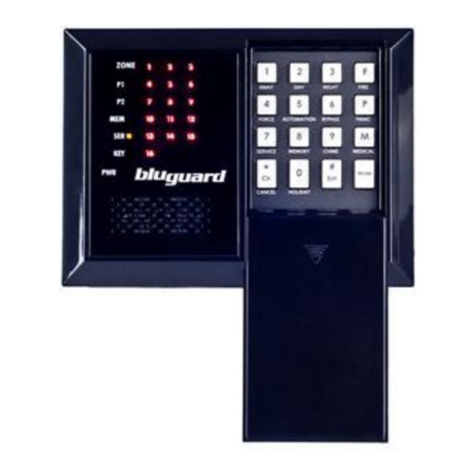
BLUGUARD
BLUGUARD SmartBus P900-T32 Series user manual

CCI Thermal Technologies
CCI Thermal Technologies Fastrax G Series Installation & operation manual
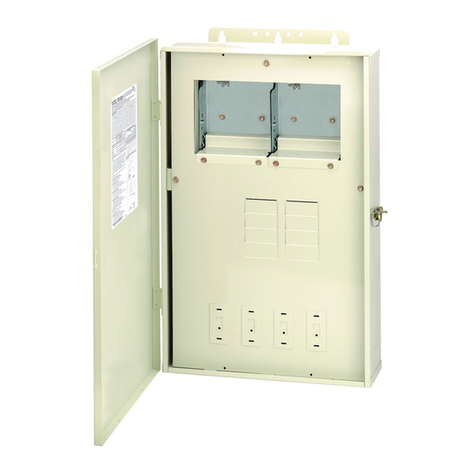
Intermatic
Intermatic PE30000 Series Installation, operation & service manual
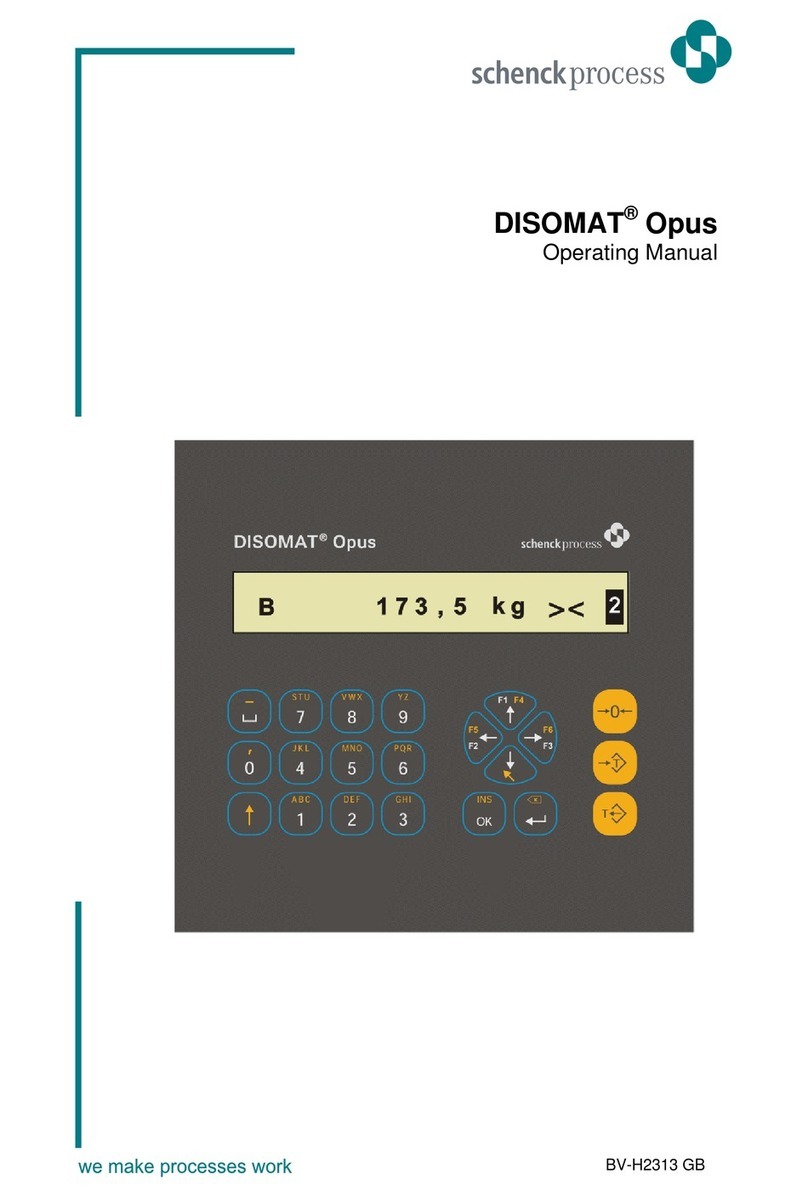
Schenck process
Schenck process Disomat Opus operating manual

Festo
Festo FED-50 manual
